The South Rim Trail is one of the best ways to experience Big Bend National Park. Starting in the Chisos Basin, you will steadily climb up to the South Rim, where jaw-dropping views of the Chihuahuan Desert await. Add on the short but steep climb up Emory Peak for an even more epic experience. Here’s what you need to know to hike the South Rim Trail in Big Bend National Park.
IMPORTANT: Starting May 2025, Chisos Basin will be closed for a construction project. This closure could include the trailhead for this hike. Get full details on the National Park Service website.
Hiking the South Rim Trail
Distance: 12.6 mile (20.3 km) loop
Total Ascent: 2,800 feet (850 m)
Difficulty: Strenuous
Length of Time: 6 to 8 hours
This can be done as one big day hike or as a two-day backpacking trip. There are numerous backcountry campsites located along the trail, the perfect place to spend the night if you are looking for solitude or a unique backpacking experience. Learn more here.
As a bonus, you have the option to add on Emory Peak, which is the tallest peak in Big Bend National Park. Emory Peak adds 3 miles (4.8 km) and about 1.5 hours to this hike, bringing the grand total distance to 15.6 miles (25.1 km).
The South Rim Trail is done as a loop. You can do this in either direction. If you do it counter-clockwise, it is a slow, gradual climb up to the South Rim, on the Laguna Meadows Trail. If you do it in a clockwise direction, the climb will be shorter but steeper, with much of this climb coming right before the spur trail to Emory Peak.
We hiked the trail in a counter-clockwise direction, so that is how I have written this post.
Below is a color-coded map of the hiking trails. The trails change names numerous times and with the option for detours (Emory Peak) and alternate trails (Northeast Rim Trail versus Boot Canyon Trail) it can get confusing. Hopefully, this map clears up any questions you may have.
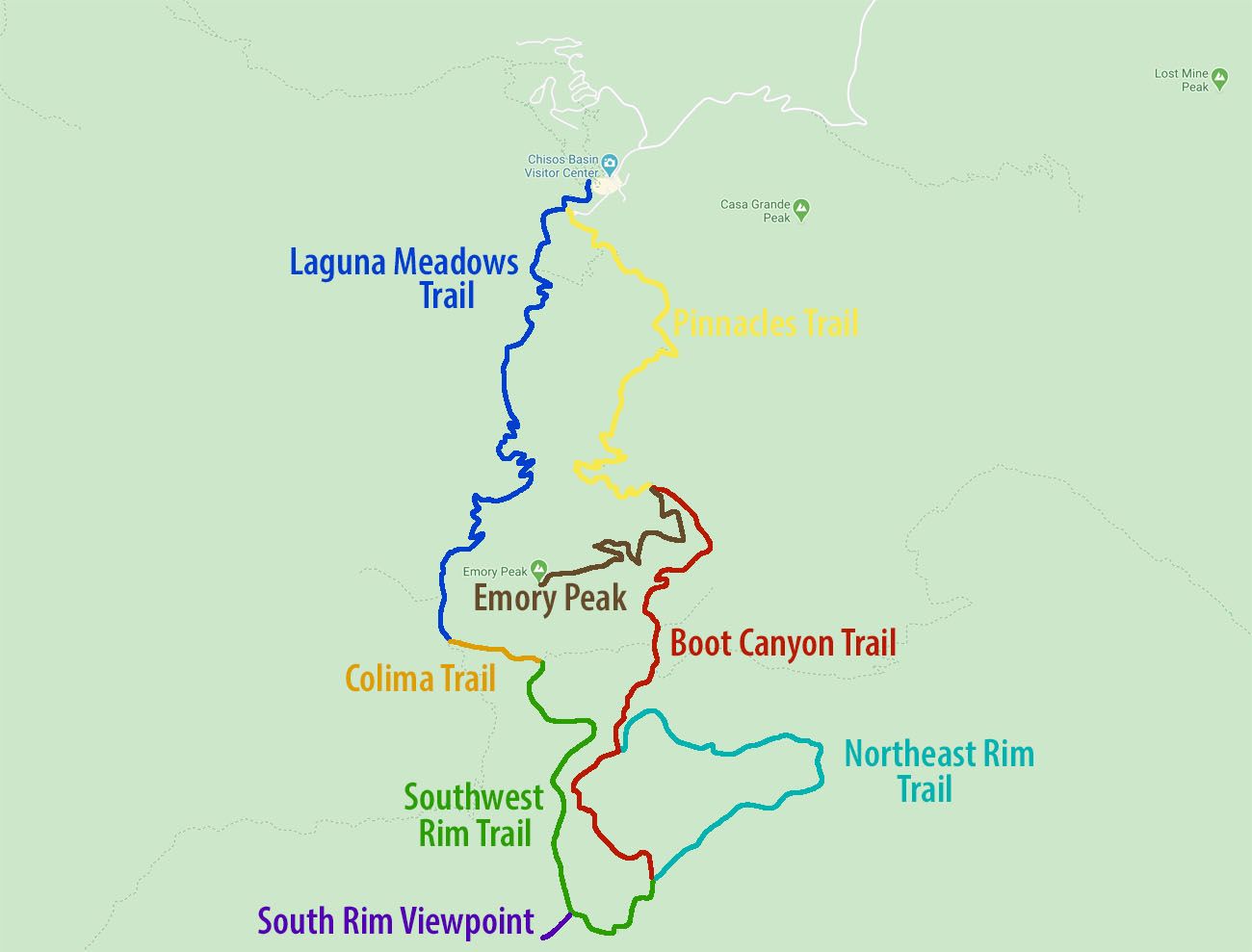
Elevation profile of the South Rim Trail and Emory Peak.
Please practice the seven principles of Leave No Trace: plan ahead, stay on the trail, pack out what you bring to the hiking trail, leave areas as you found them, minimize campfire impacts, be considerate of other hikers, and do not approach or feed wildlife.
South Rim Trail Loop
This hike starts and ends near the Chisos Basin Visitor Center.
There are several trails that start next to the Chisos Basin parking lot (the Window Trail, the Window View Trail, and the Laguna Meadows Trail). From the parking lot, look for the sidewalk that leads to these hiking trails.
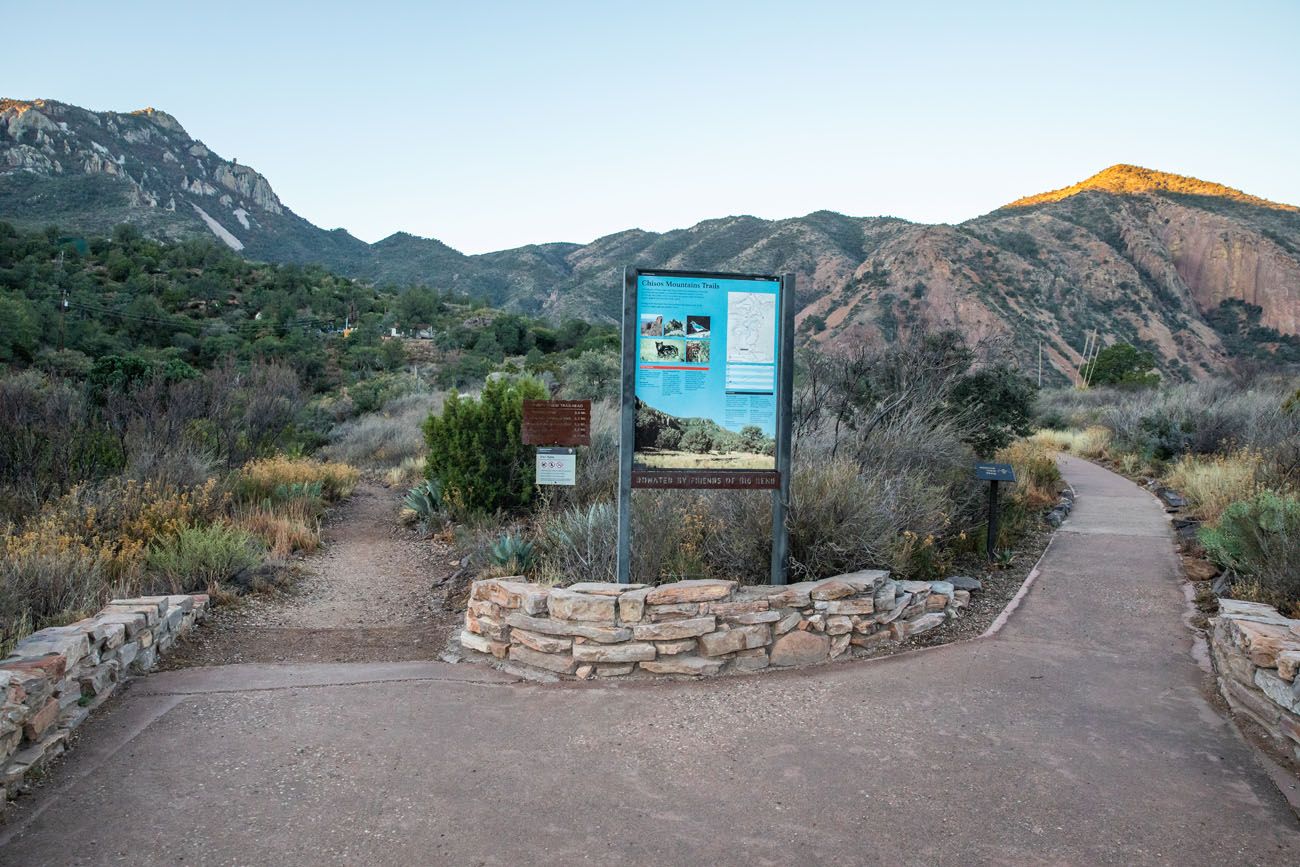
Trail sign at the Chisos Basin trailhead. The trail to the left is the Laguna Meadows Trail.
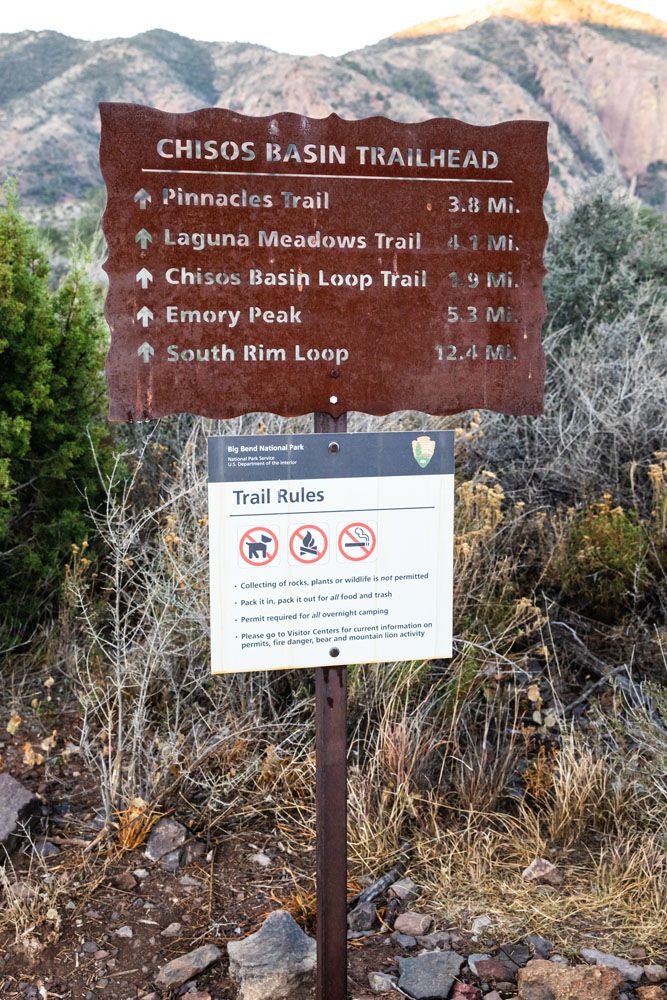
Take the Laguna Meadows Trail. This trail starts off relatively flat and then gradually gains elevation as you approach the South Rim Trail.
For much of this part of the hike, you will be walking in and out of a forest. During the early morning hours, this part of the trail is all in the shade, until the sun rises high enough in the sky to shine over the mountain peaks.
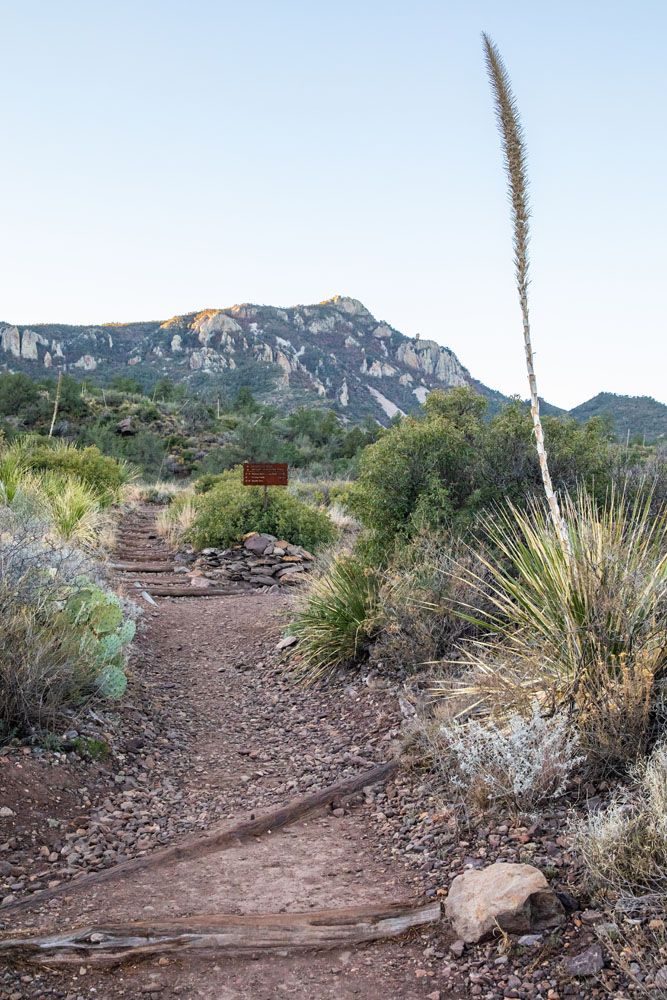
Laguna Meadows Trail (near the visitor center) with Emory Peak in the distance.
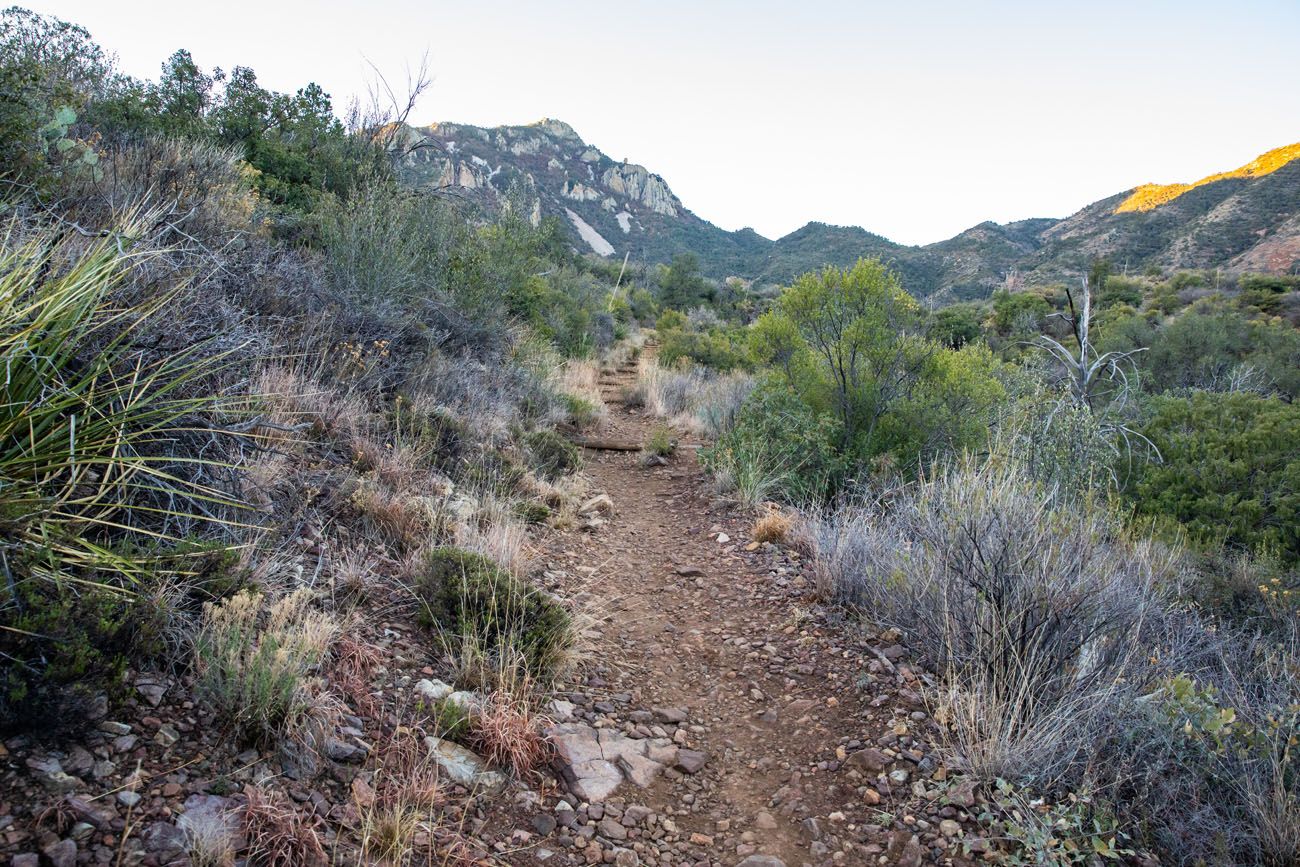
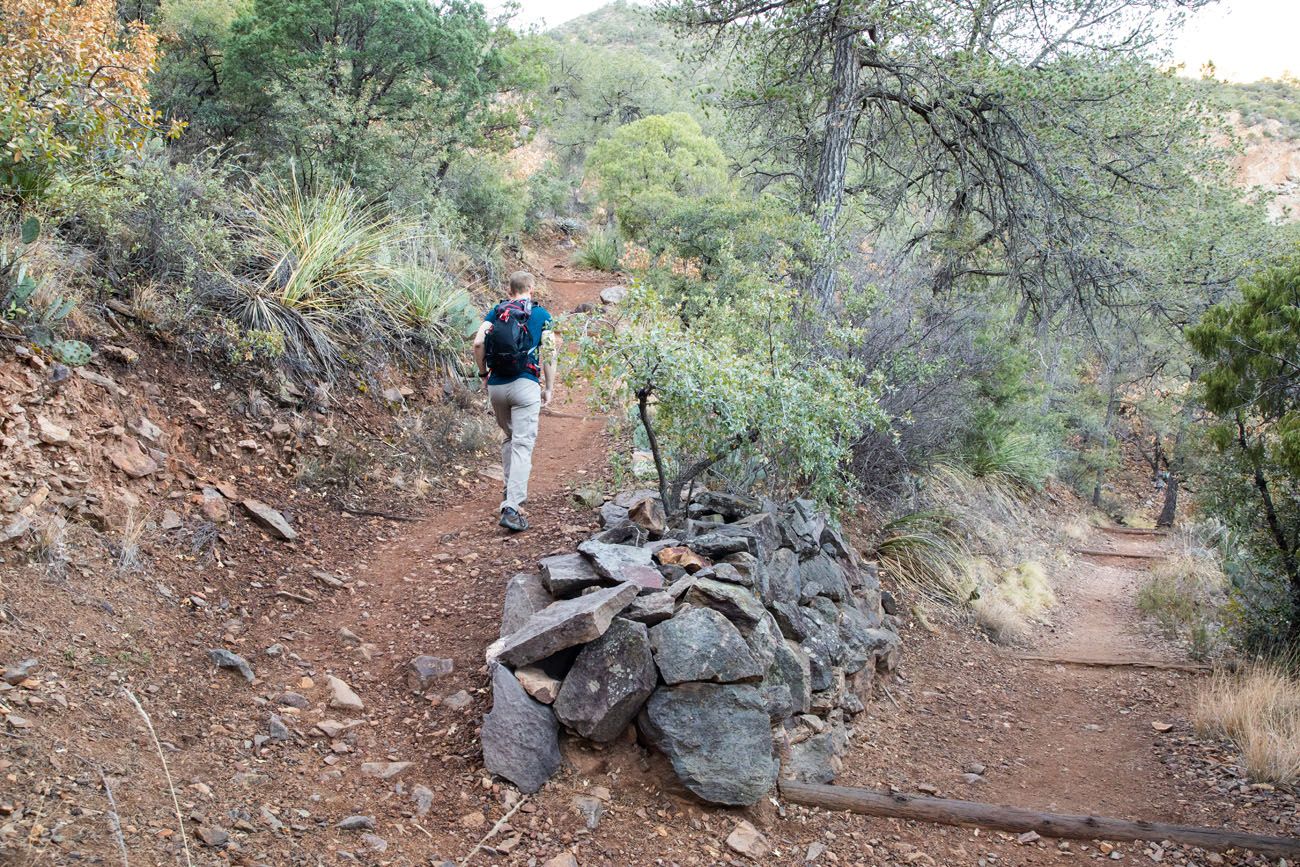
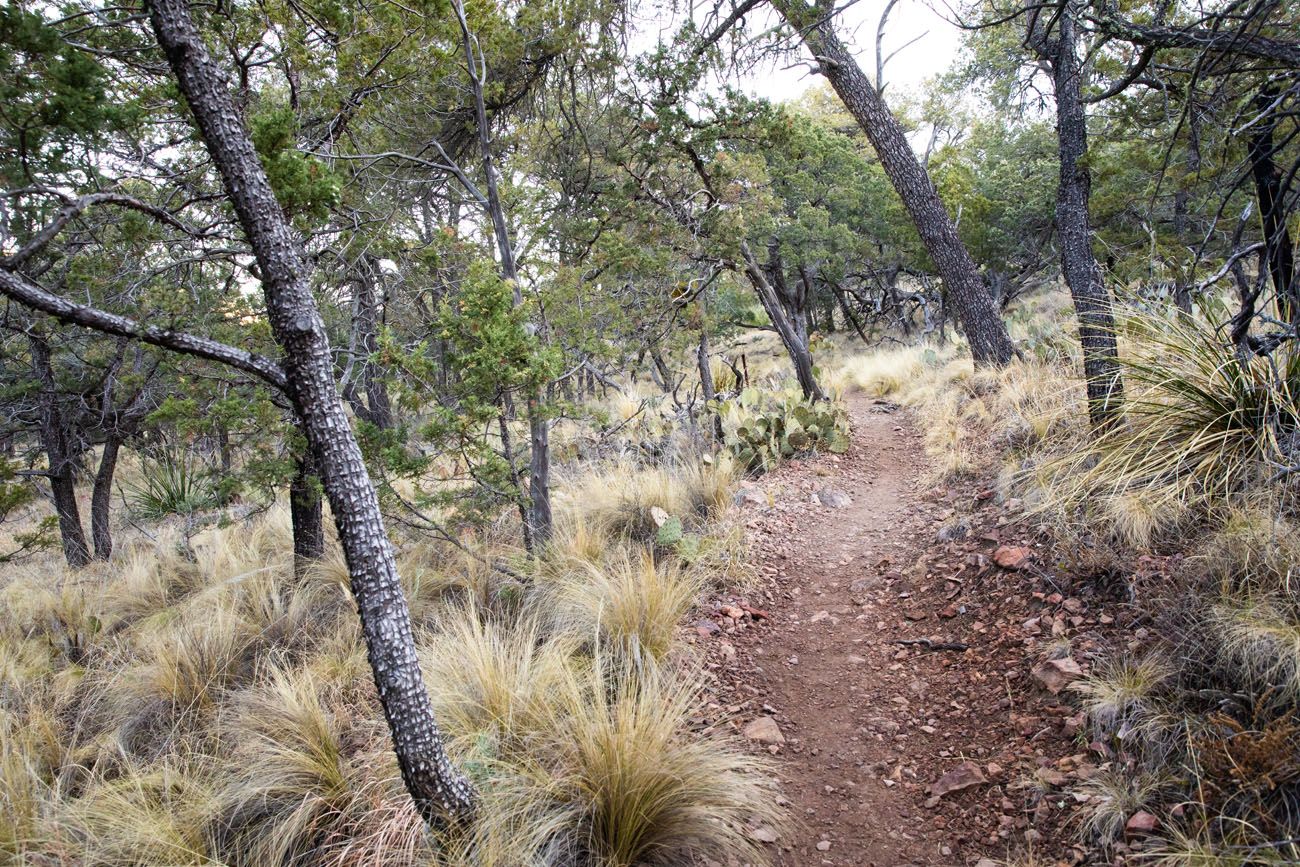
After the Laguna Meadows Trail, the trails change names several times. However, if you continue to follow the signs for the South Rim Trail, you will end up in the correct place.
The Laguna Meadows Trail ends at a fork in the trail. Continue on the Colima Trail for a short distance until you reach the Southwest Rim Trail.
For most of the hike, so far, you are in a forest. It’s a pretty hike but there is not much of a view. Every so often, you will get a brief glimpse of the mountain range, but it is not until you reach the South Rim that your effort really begins to pay off. But the time you reach the South Rim Trail, most of your elevation gain is done and you can enjoy the views over the park.
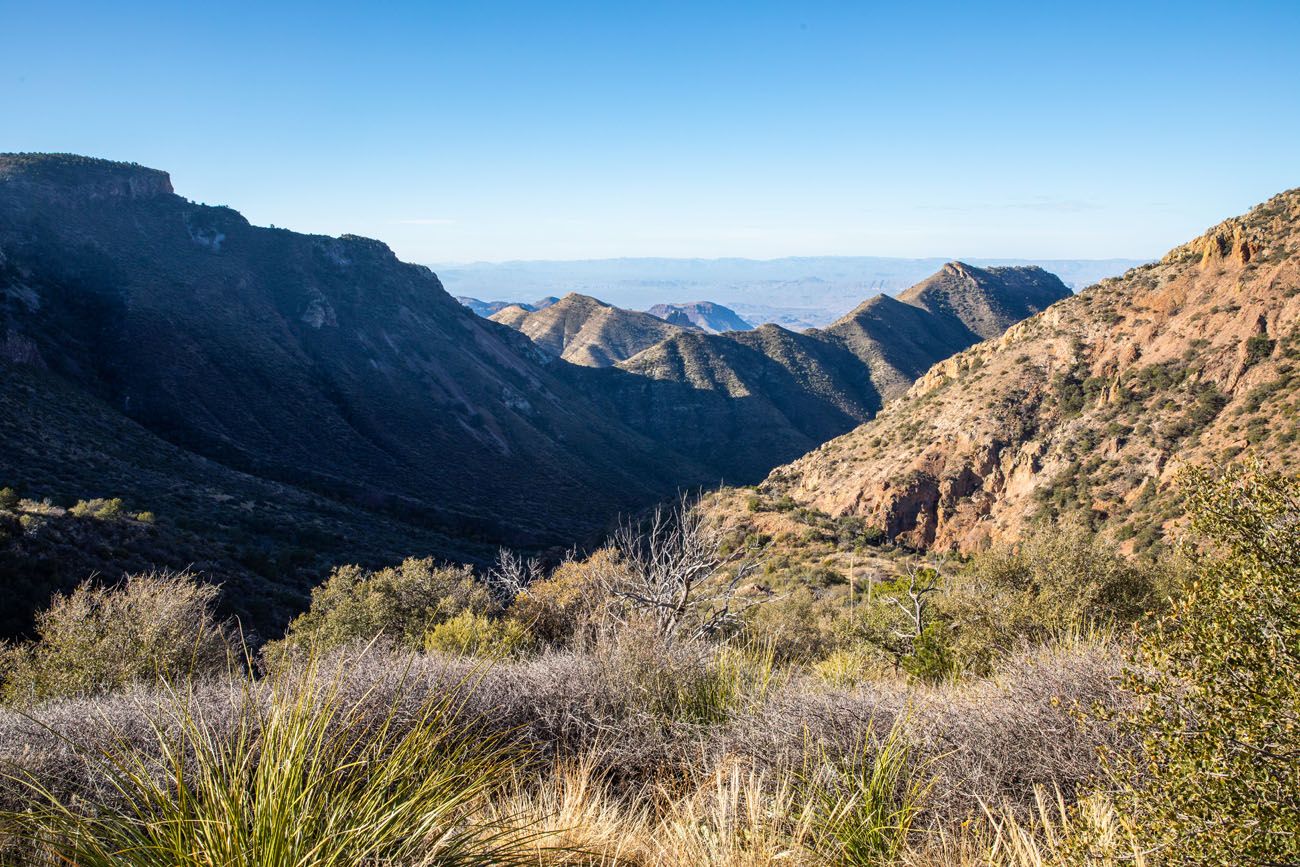
First good view of the hike.
The South Rim
It can be very easy to miss what might be one of the best views of the day.
Once you get to this sign (and “South Rim” on Google Maps), make sure you take the spur trail to the right. This trail leads out to the South Rim, where the views are incredible, and almost as good as those from Emory Peak. Here are the GPS coordinates, just to make sure you don’t miss it: 29.226315, -103.302805.
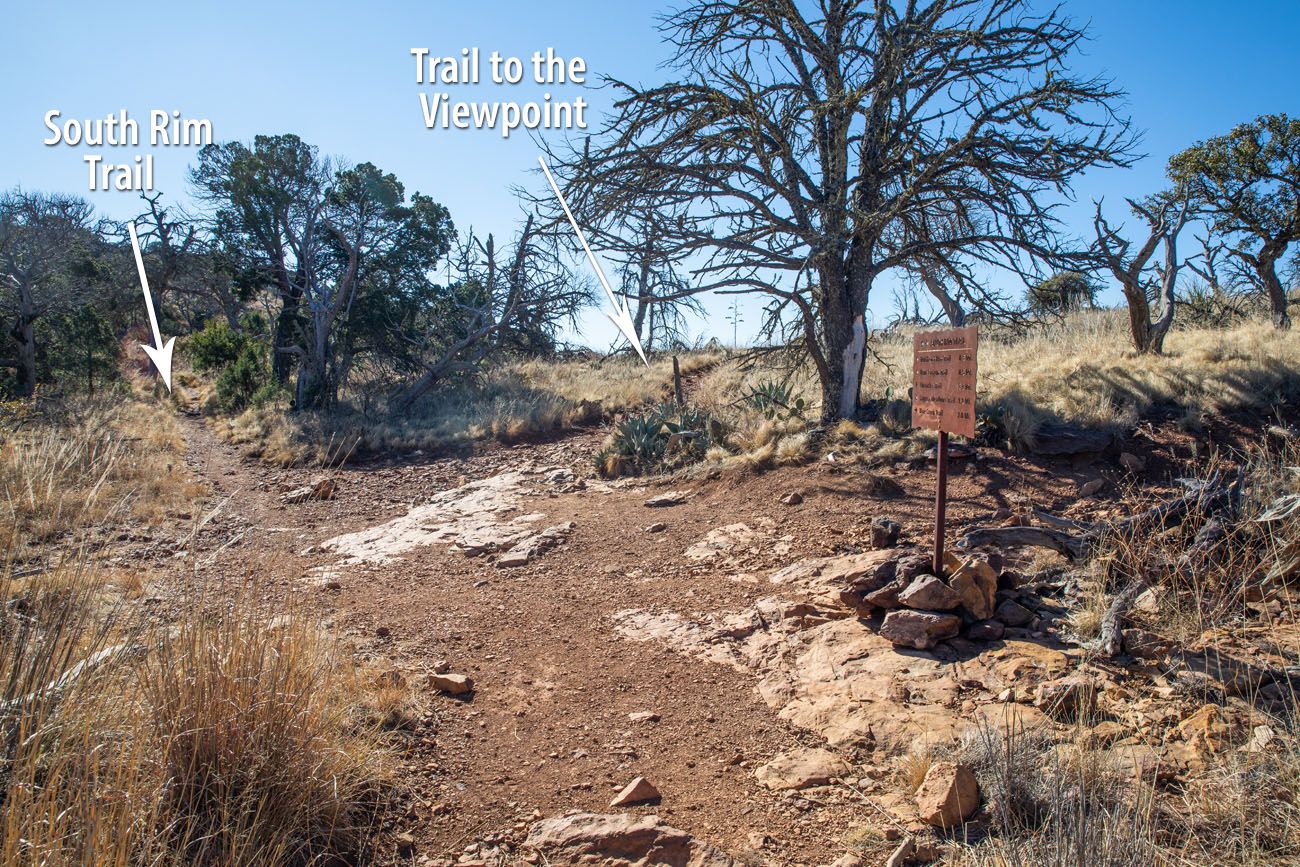
If you hike the spur trail out to the farthest point, this adds about 0.25 miles to the hike (and it is worth it!).
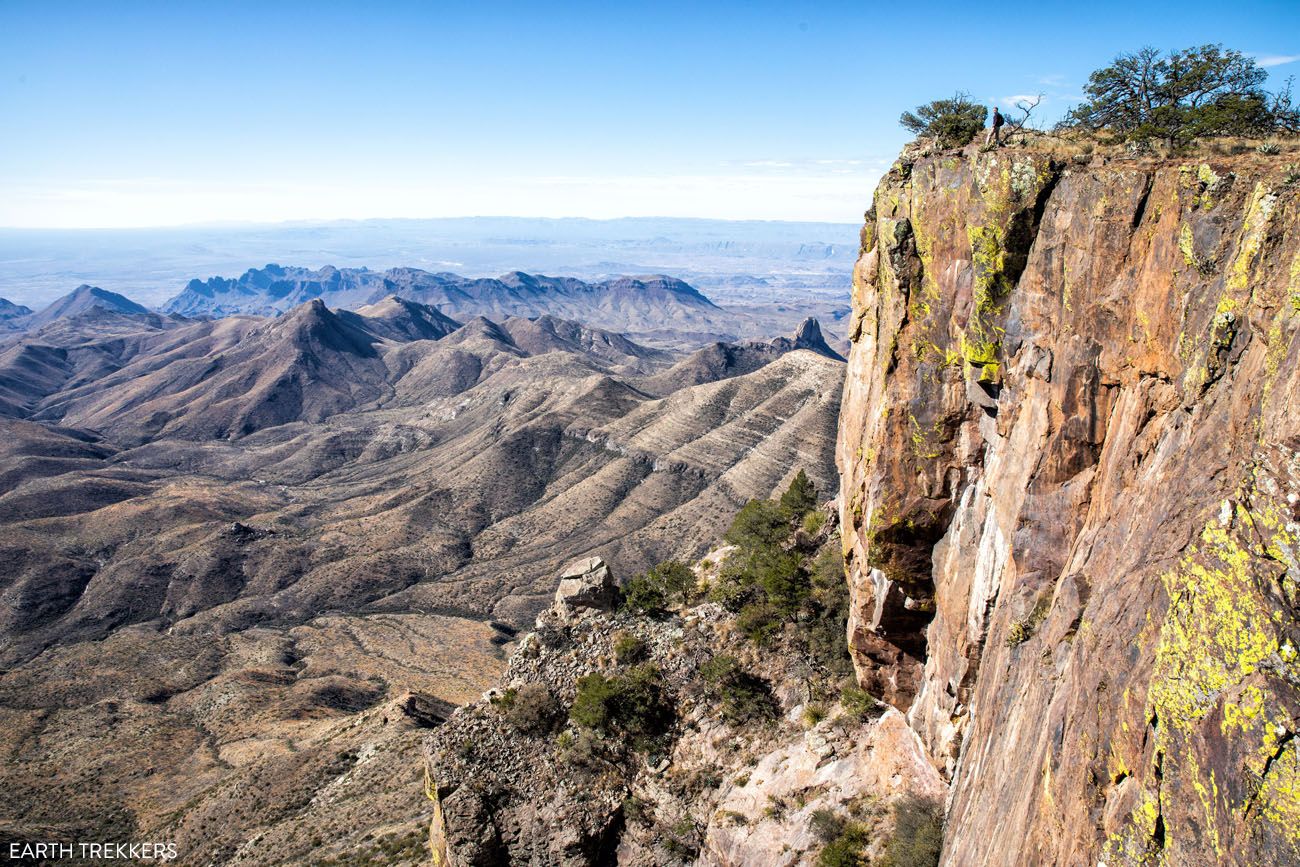
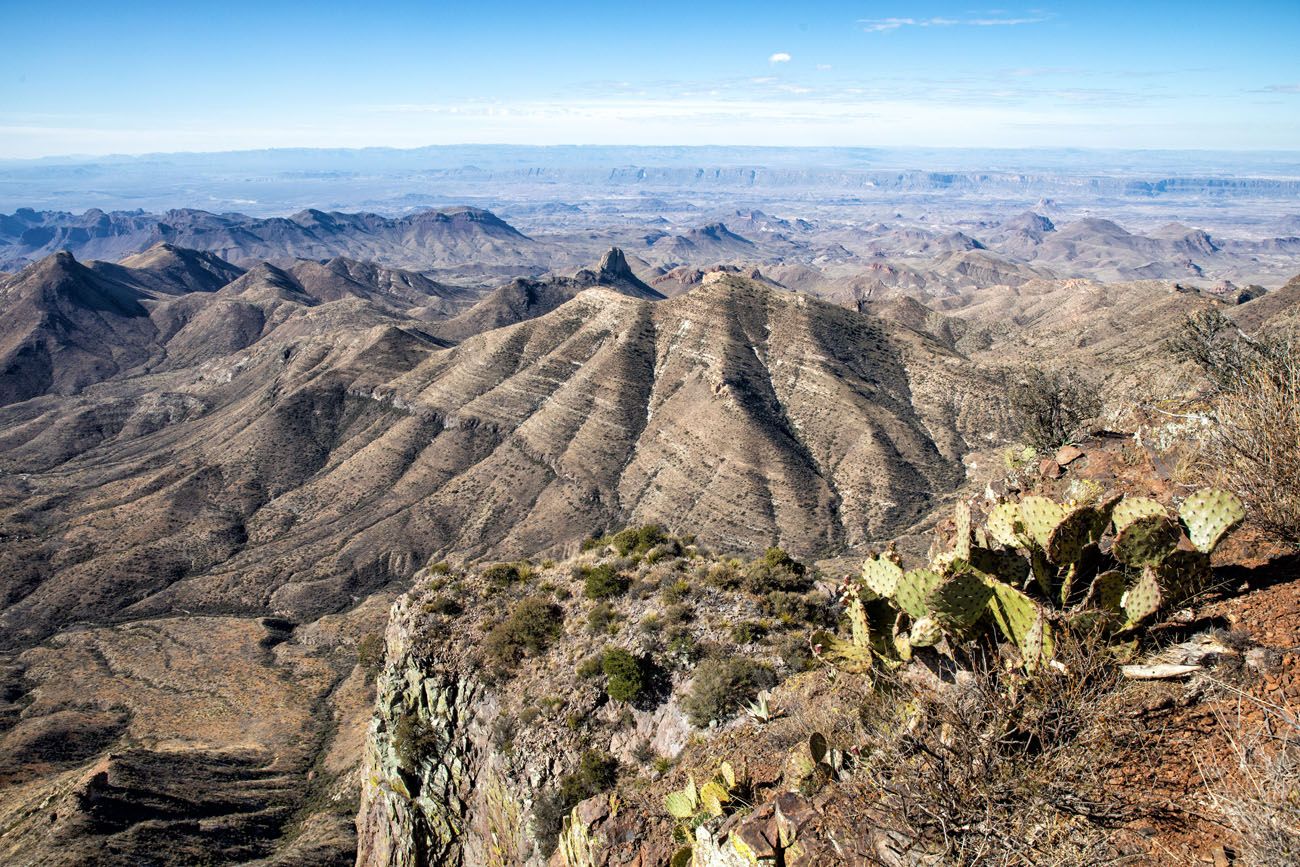
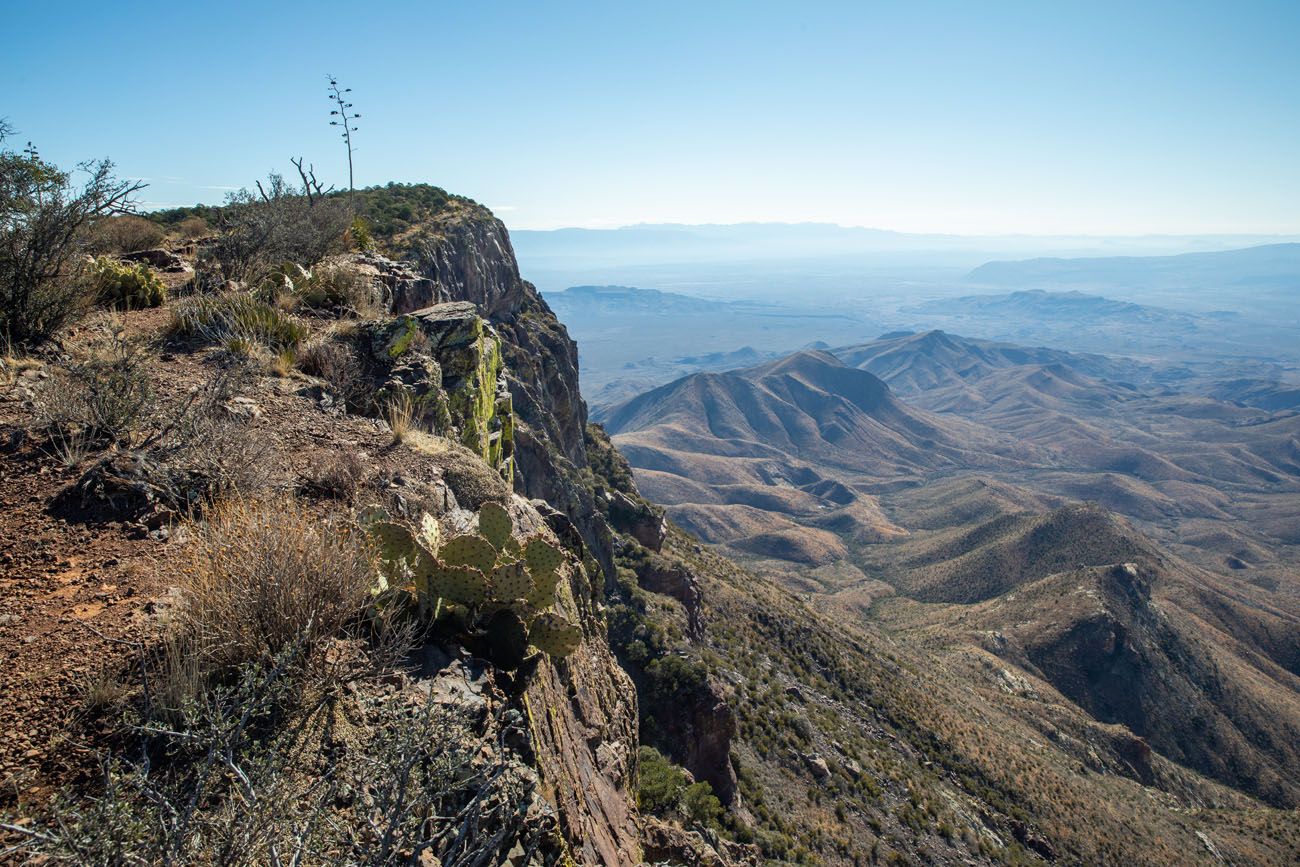
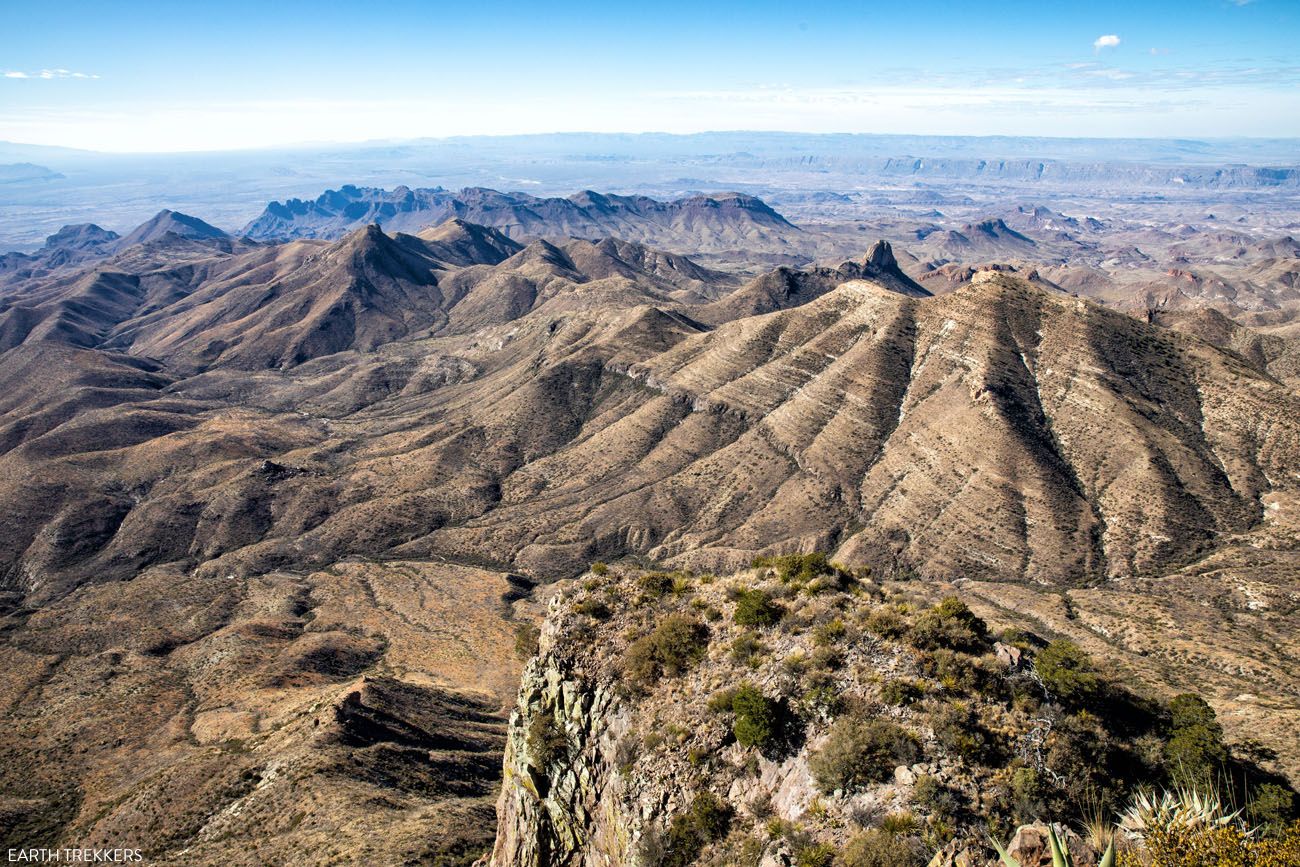
Here are the views as you hike along the Southwest Rim Trail.
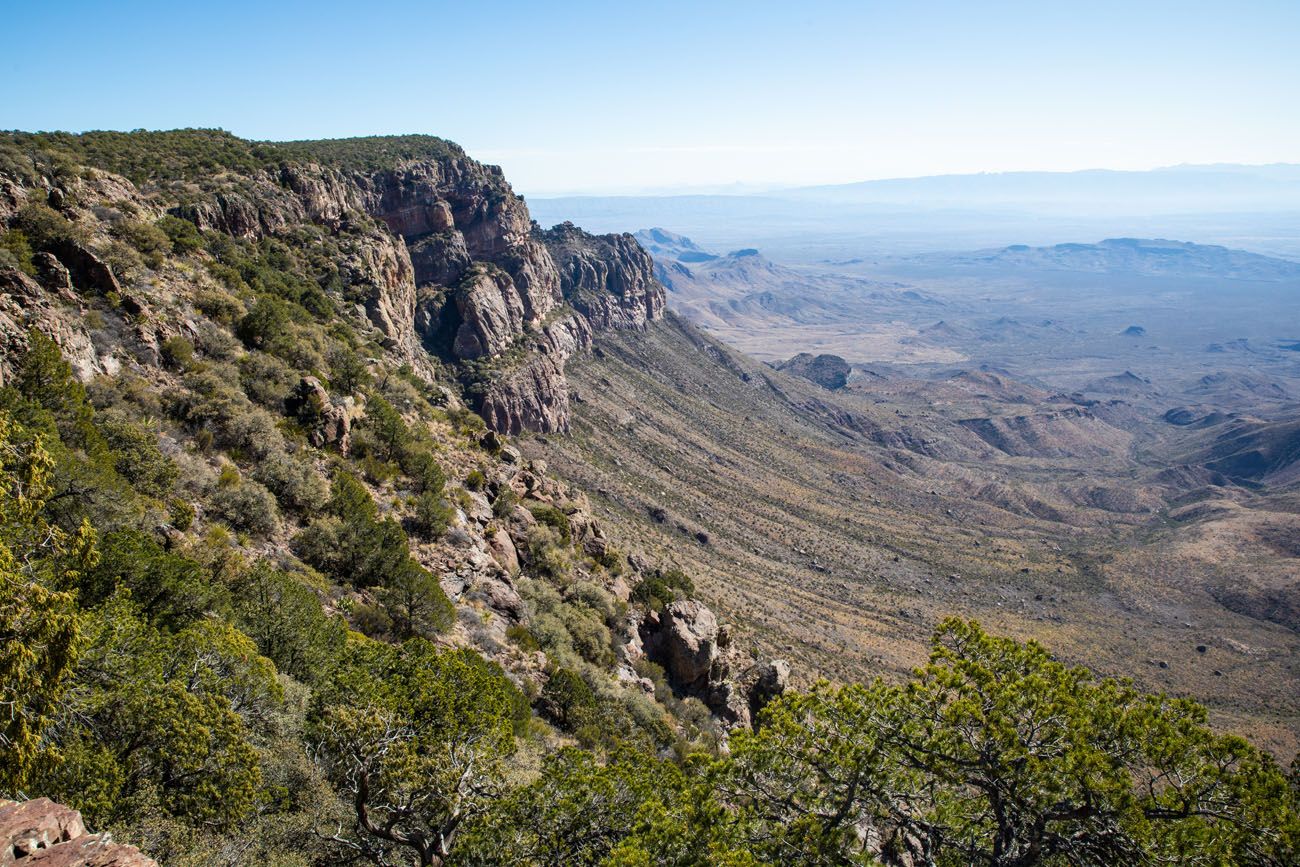
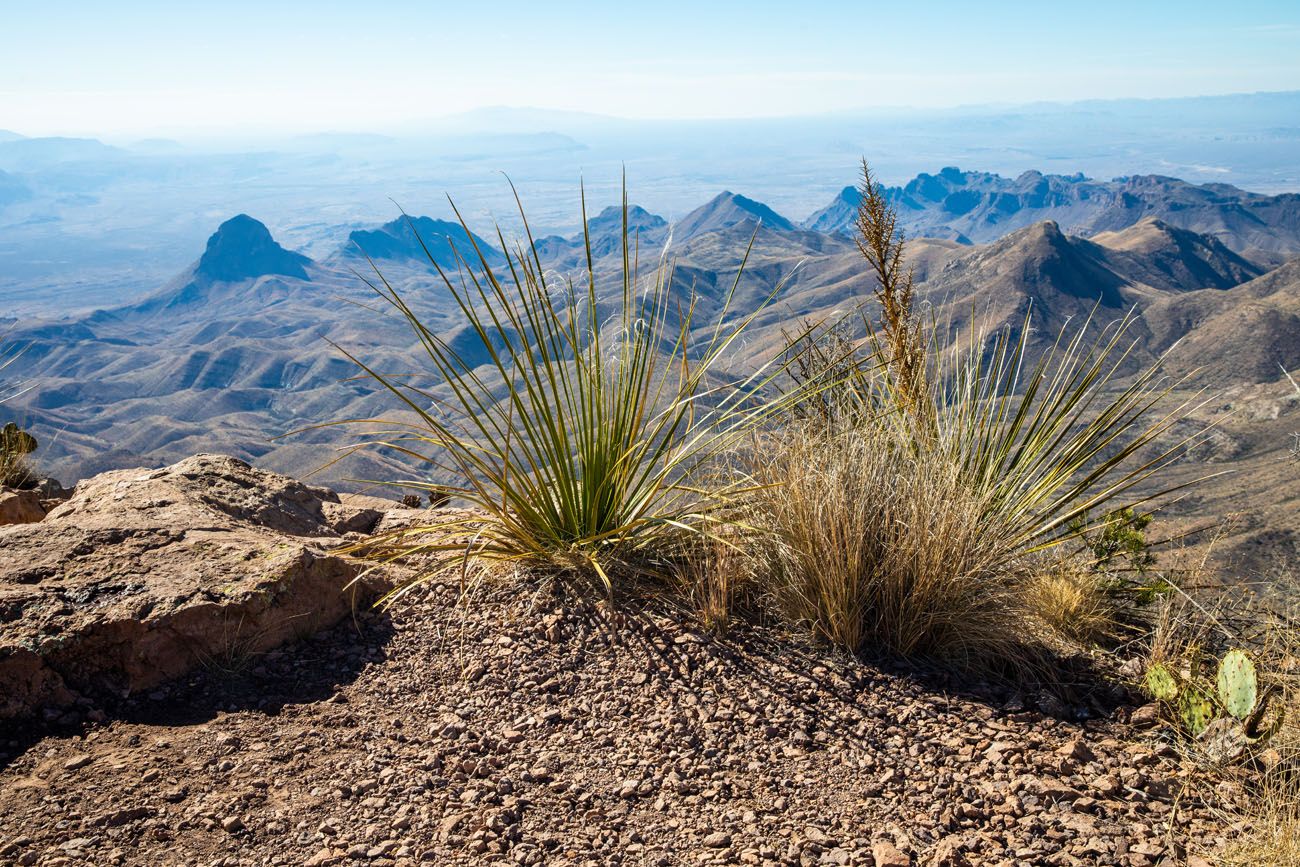
As you continue on the South Rim, you will reach another fork in the trail. If it is open, you can take the Northeast Rim Trail for similar views as what you get from the South Rim. However, this adds more distance and time onto the hike. Plus, this section of trail is closed during peregrine falcon nesting season (typically February 1 to May 31).
The Northeast Trail was closed during our visit so we hiked Boot Canyon Trail.
PRO TRAVEL TIP: Before you start your hike, ask about trail closures at the visitor center (you might have to do this the day before your hike since the visitor center typically does not open until 8 am). I assumed that the NPS website would have up-to-date information about trail closures, but this was not the case. The website did not list the trail closure for the Northeast Rim Trail during our visit. It wasn’t until we arrived at the Northeast Rim Trail (now over 5 miles into the hike) that we learned that it was closed.
For a shorter hike, take the Boot Canyon Trail. This trail is 3.3 miles long and is a mostly downhill walk until you get to the Pinnacles Trail and the Emory Peak Trail.
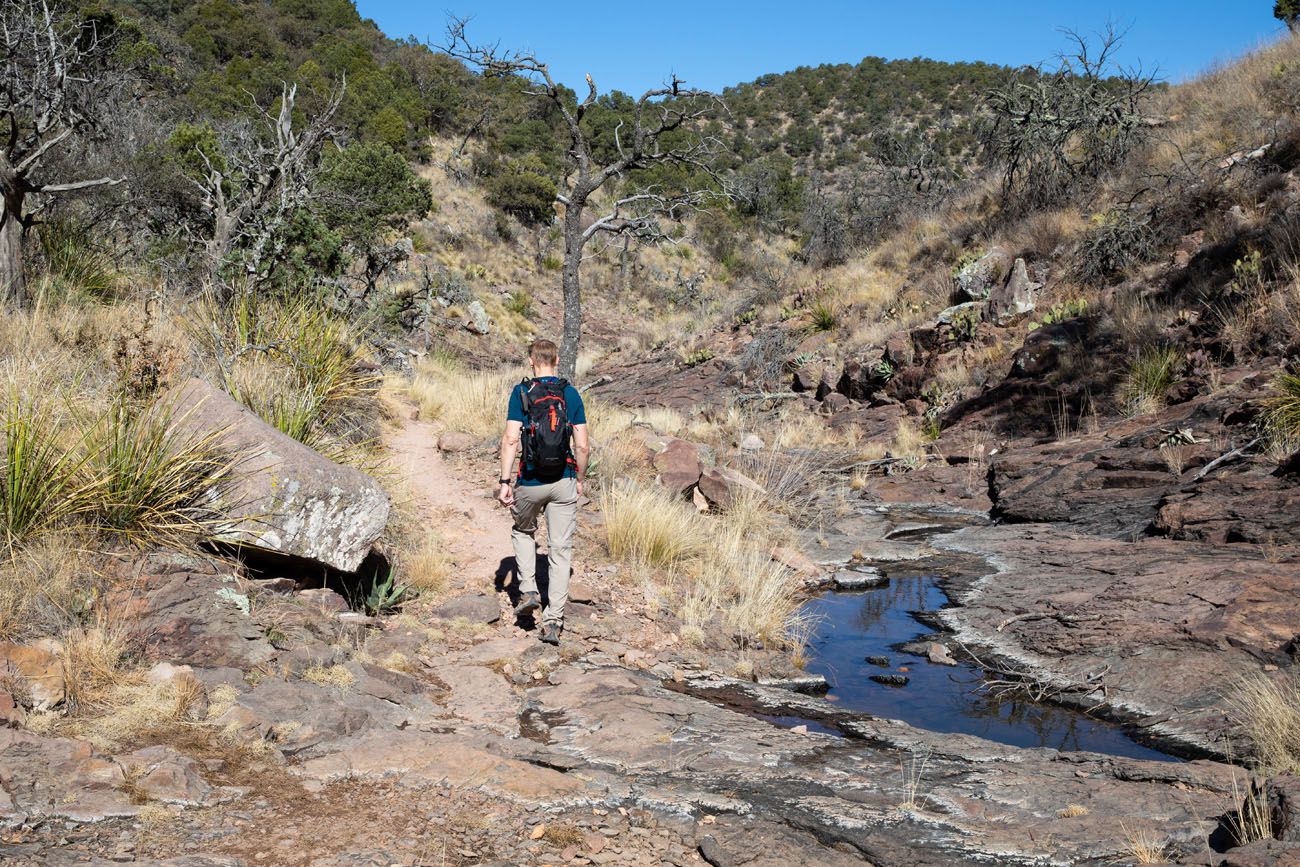
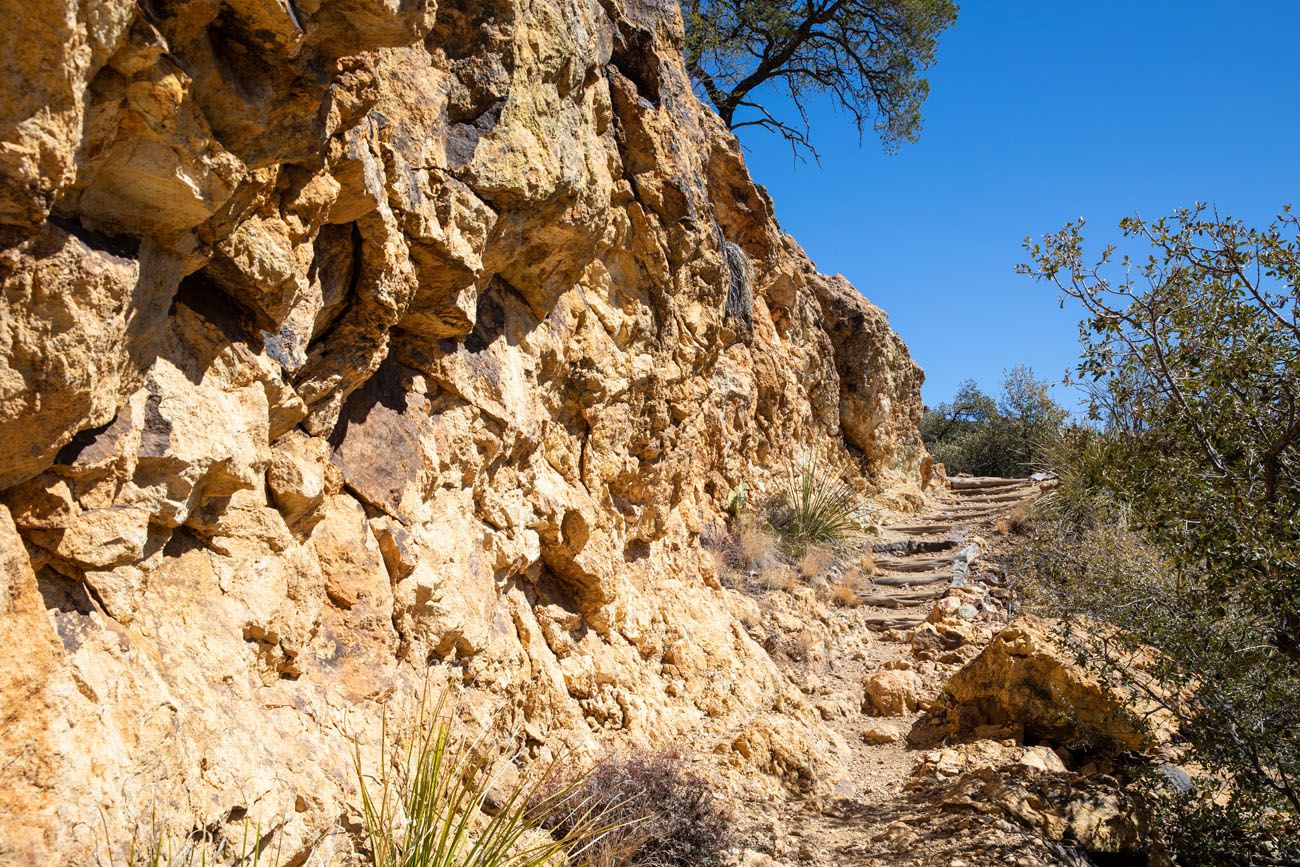
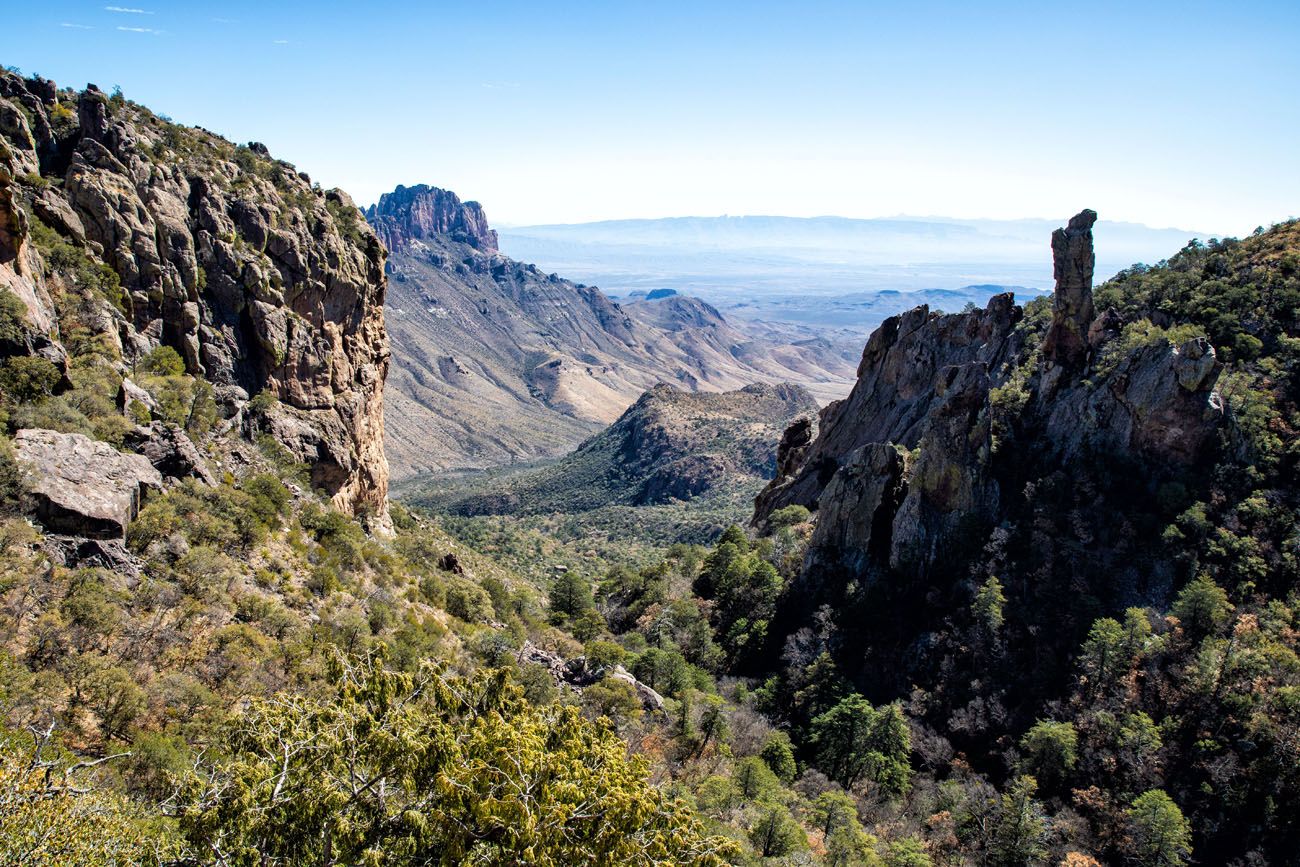
Once you reach the saddle that sits at the base of Emory Peak, you have a choice to make. You can either take the trail to Emory Peak, for amazing panoramic views over Big Bend National Park, or you can skip this and return to the Chisos Basin Visitor Center on the Pinnacles Trail.
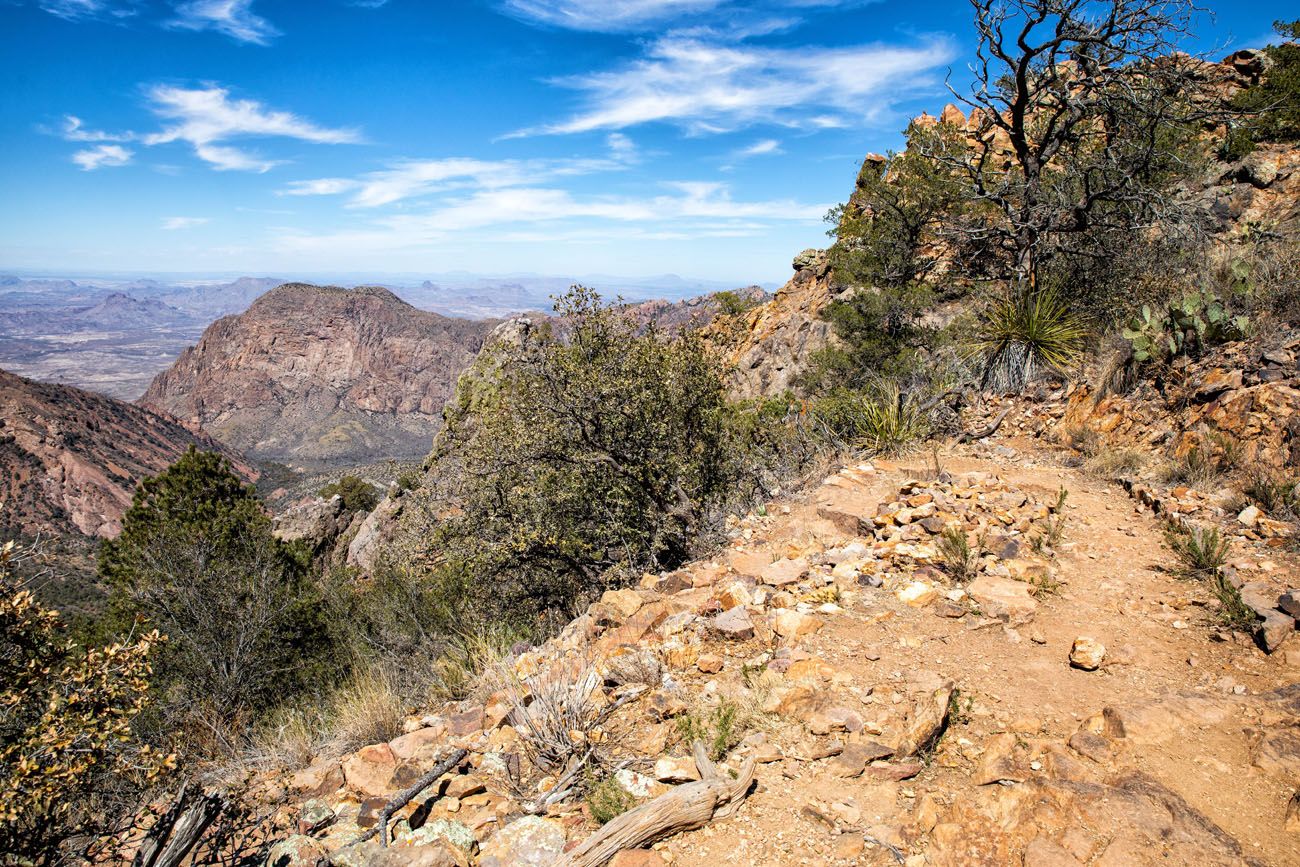
View from the saddle at the base of Emory Peak
The Hike to Emory Peak
Emory Peak is the highest point in Big Bend National Park and the Chisos Mountains.
This detour adds 3 miles (4.8 km), an additional 800 feet (245 m) of elevation gain, and about an hour and a half onto the hike. The trail ends with a 25-foot rock scrambling section to get up onto the peak. If you like rock scrambling, you’ll love this part of the hike. But if you have a fear of heights or climbing up and down massive boulders, this final section can be intimidating.
From Emory Peak, enjoy the spectacular 360° views over Big Basin National Park. On a clear day, you can see the Chihuahuan Desert and the entire Chisos Mountain Range.
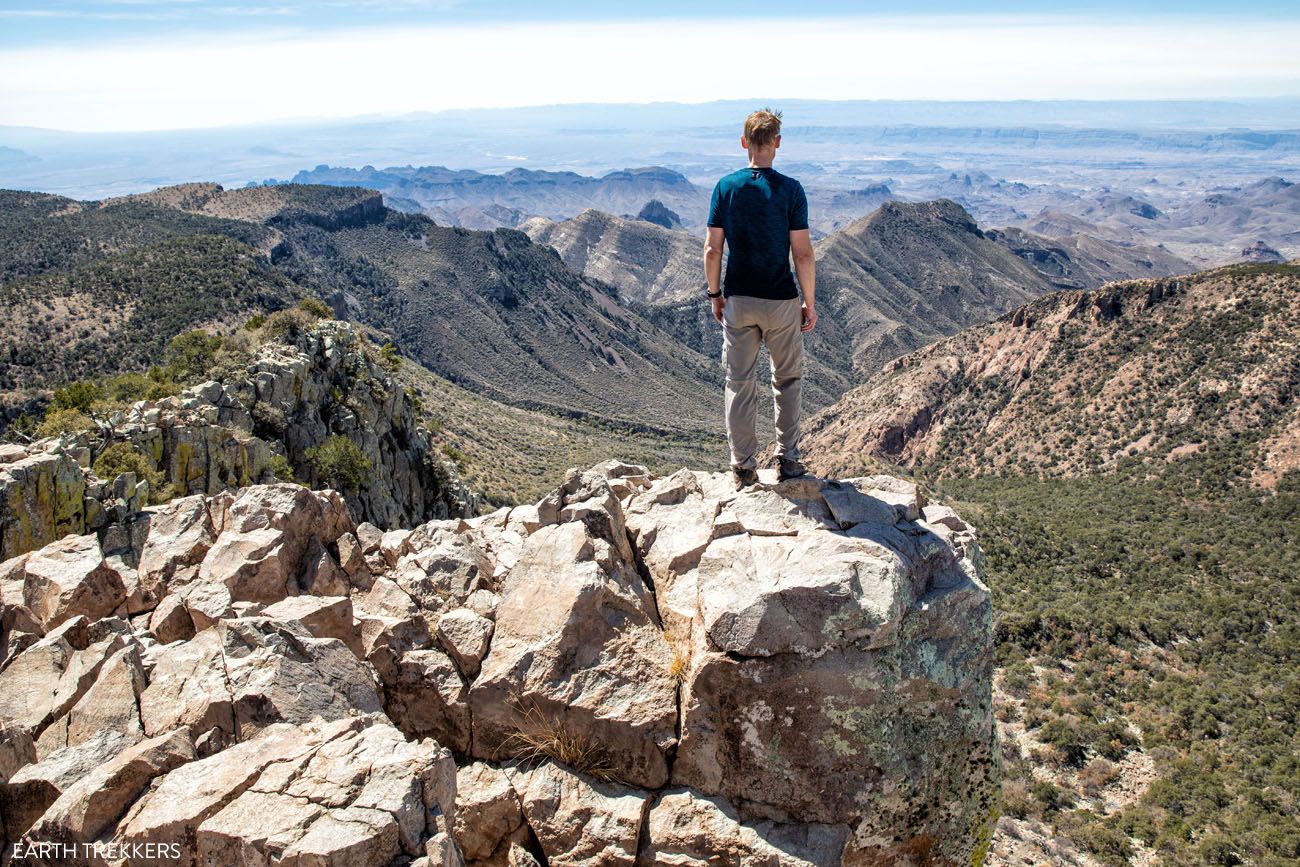
Pinnacles Trail to Chisos Basin
Once you are back on the saddle, continue down the Pinnacles Trail until you reach Chisos Basin. At first, the trail is steep, with a lot of switchbacks. When we did this, it felt like a never-ending descent to get back to the Visitor Center. However, I think that the Pinnacles Trail is more interesting than the Laguna Meadows Trail, since you are surrounded by rocky mountains and are treated to better views of the park along the way.
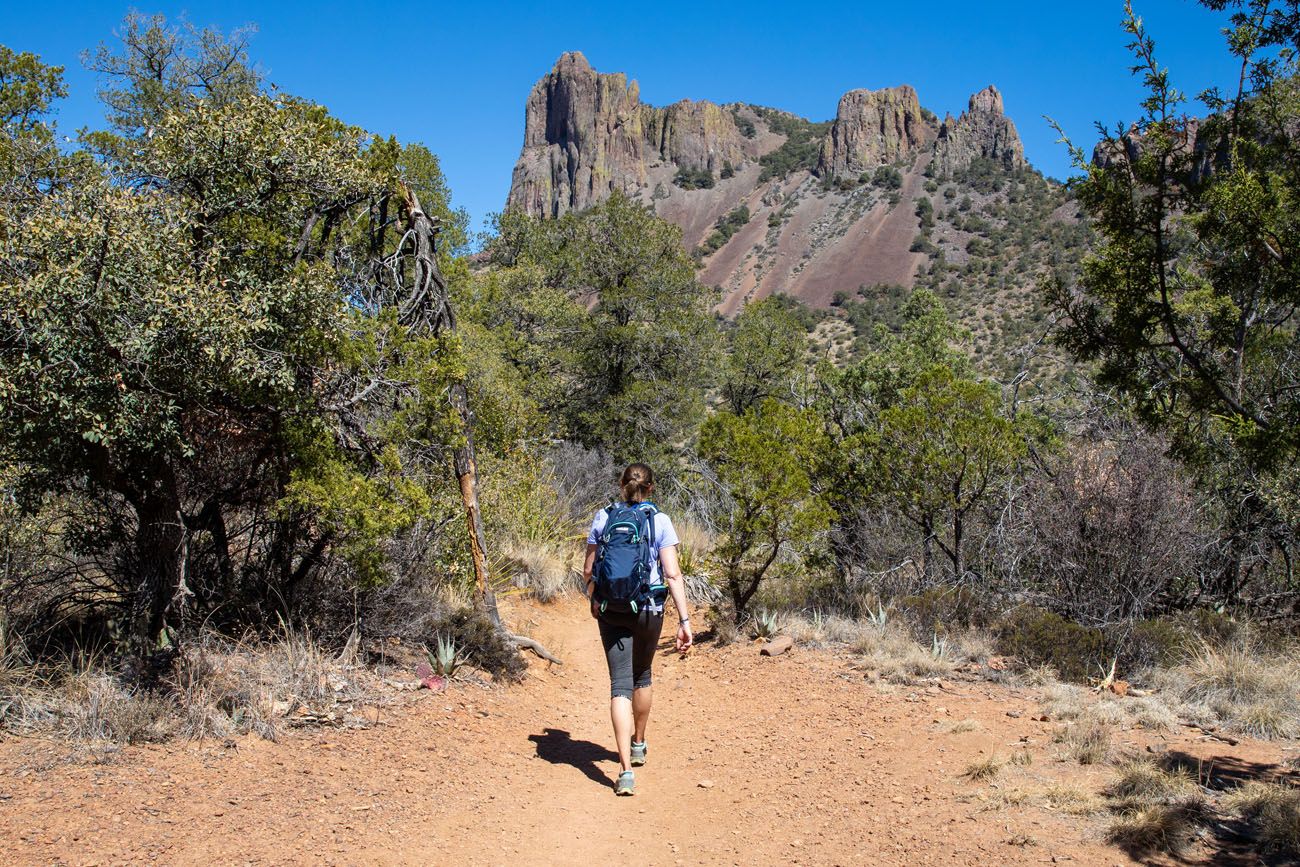
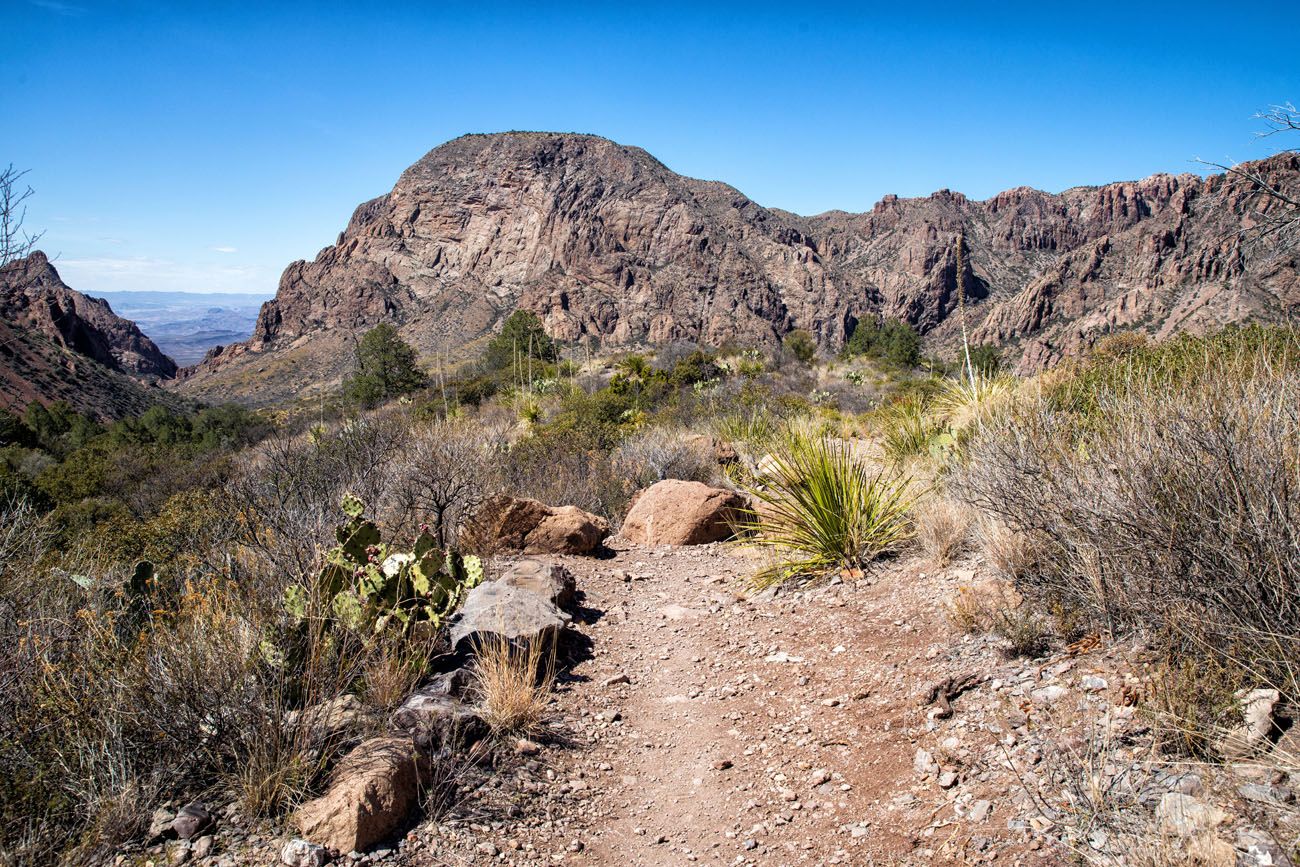
The Pinnacles Trail will join the Laguna Meadows Trail and then the hike ends at the Chisos Basin Visitor Center.
Summary of the Hiking Trails: Laguna Meadows Trail → Colima Trail → Southwest Rim Trail → Boot Canyon Trail or the Northeast Rim Trail → Emory Peak Trail (optional) → Pinnacles Trail → Laguna Meadows Trail
Tips to Have the Best Experience
Start early in the day. This is a very long hike, so ideally, start at sunrise to give yourself enough time to complete this hike. Starting early will also let you get the most strenuous part of the hike, the ascent up to the South Rim, finished before temperatures really heat up.
Bring lots of water. During the warmer months, bring 4 liters per person.
Bring sunblock. On the South Rim and the trail to Emory Peak, there is very little shade.
Check in the Visitor Center and/or the National Park Service website about trail closures before you go. The Northeast Rim Trail is typically closed from February 1 to May 31 for peregrine falcon nesting season.
There is a chance you could cross paths with a black bear or a mountain lion. Click the links for advice from the NPS website on what to do should you encounter one of these animals on the hiking trail.
Do you have any questions about how to hike the South Rim Trail? Let us know in the comment section below!
More Information about Big Bend National Park
If this is part of a bigger road trip through the USA, visit our Texas Travel Guide and United States Travel Guide for more inspiration and travel planning tips.
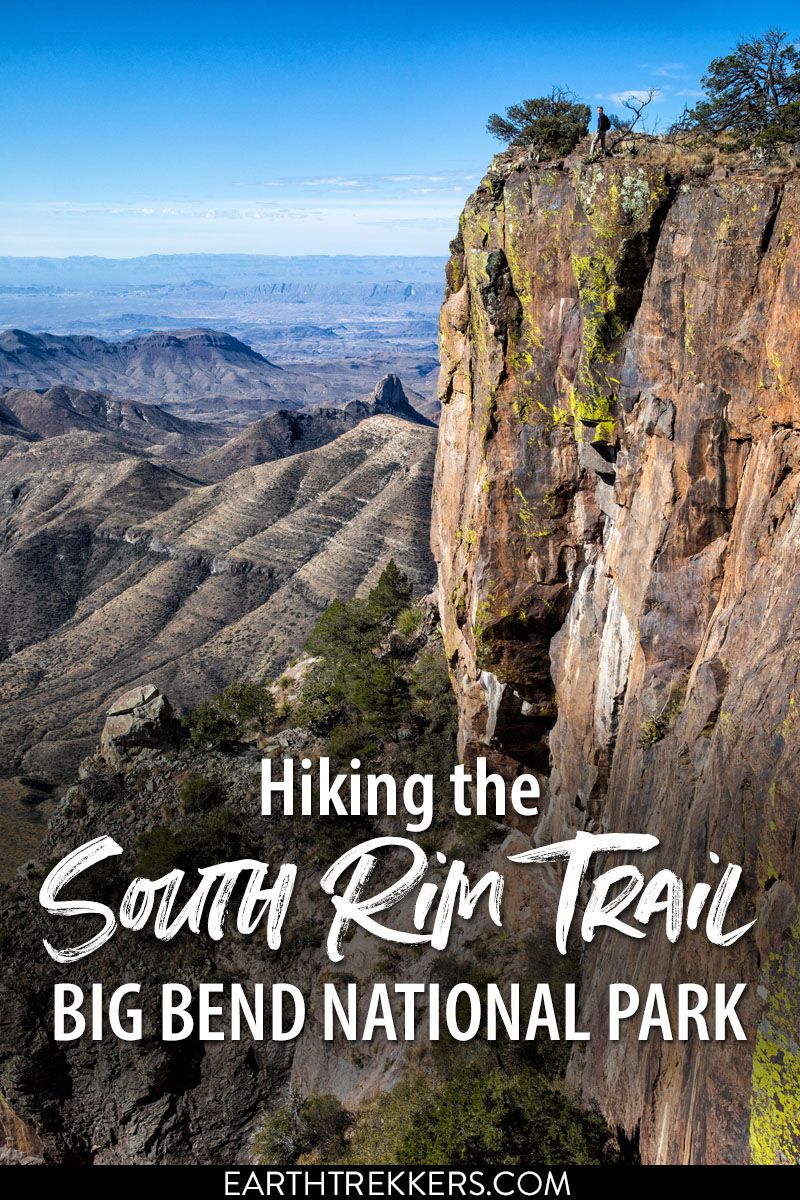
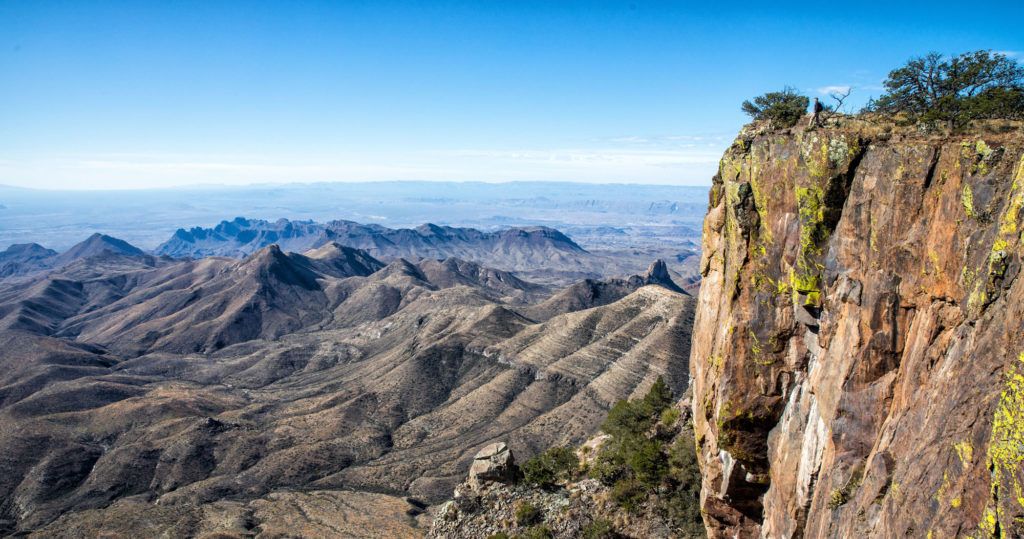
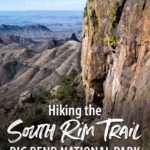
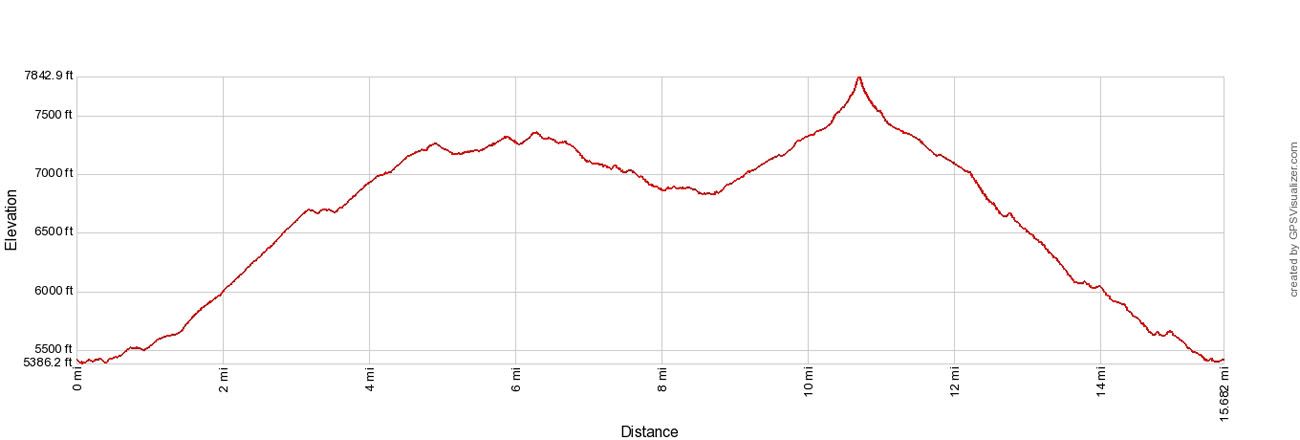
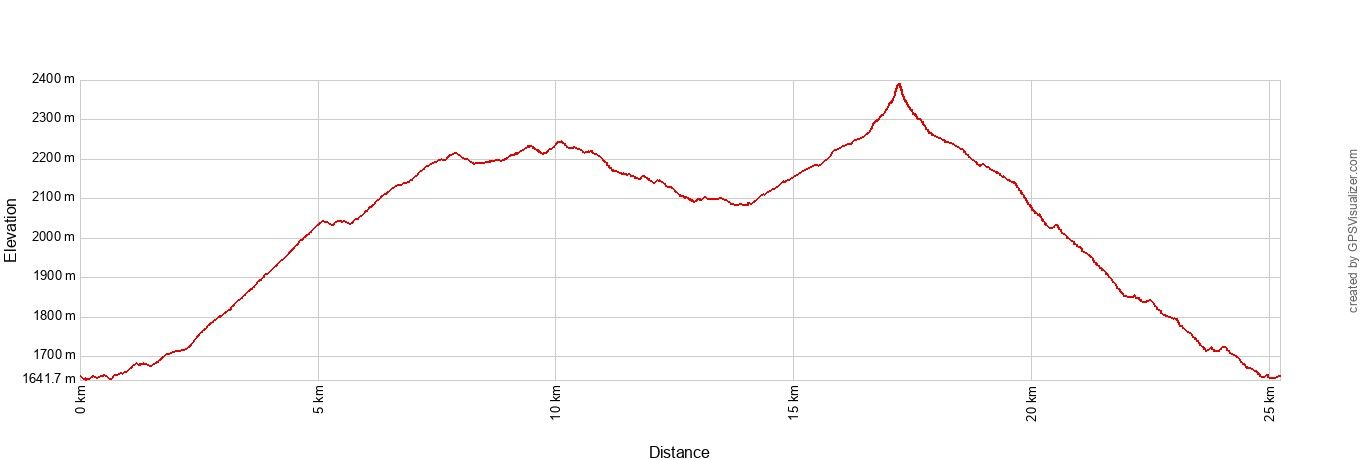
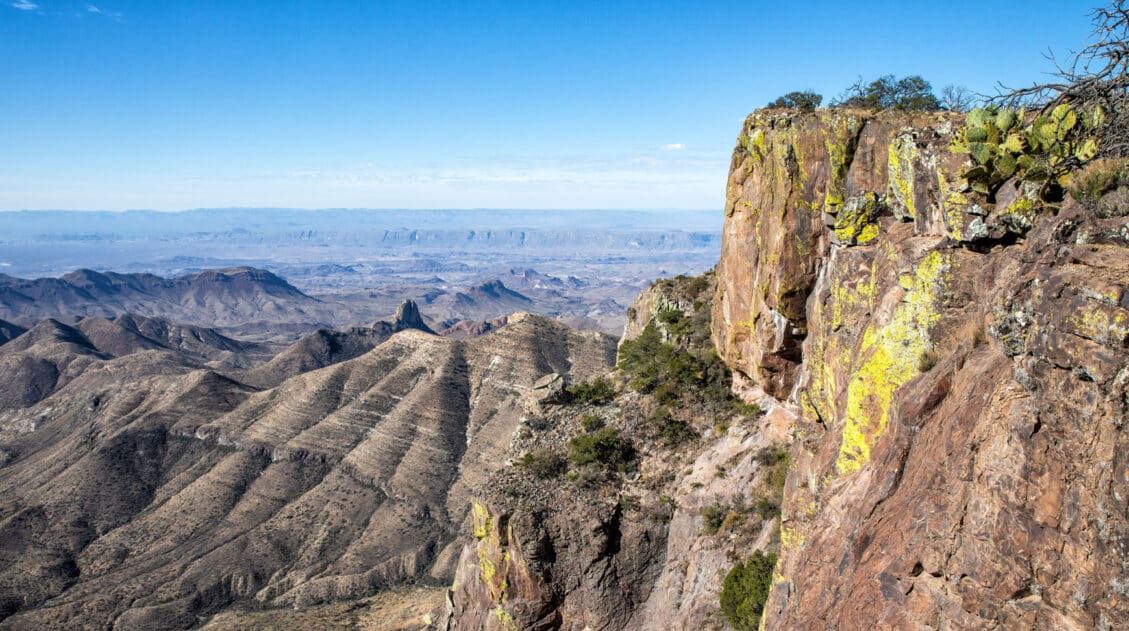
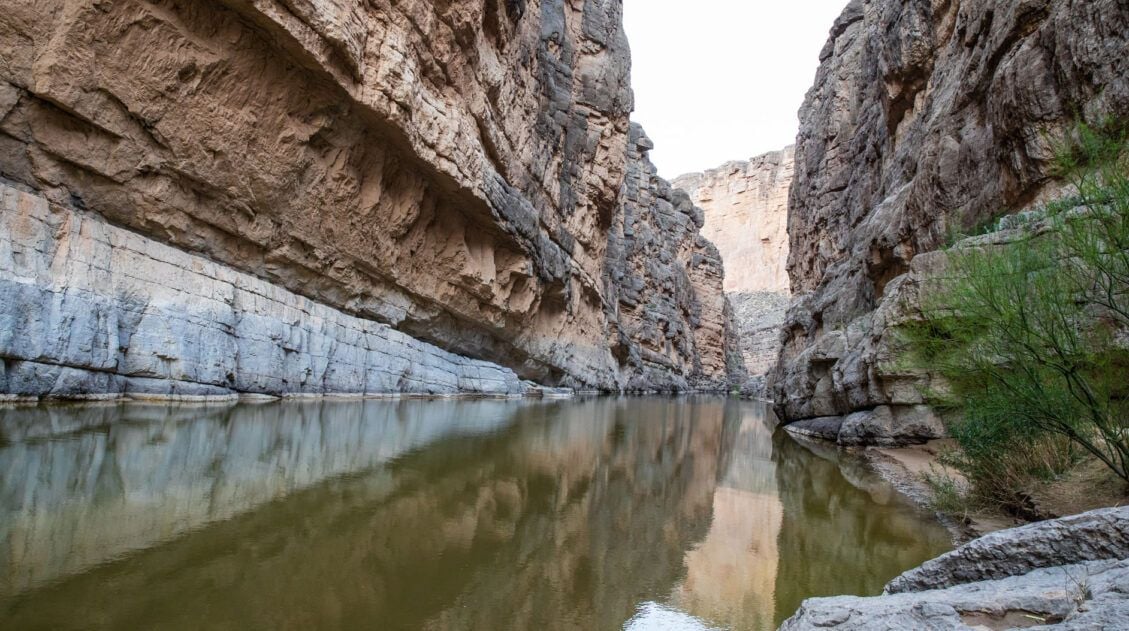
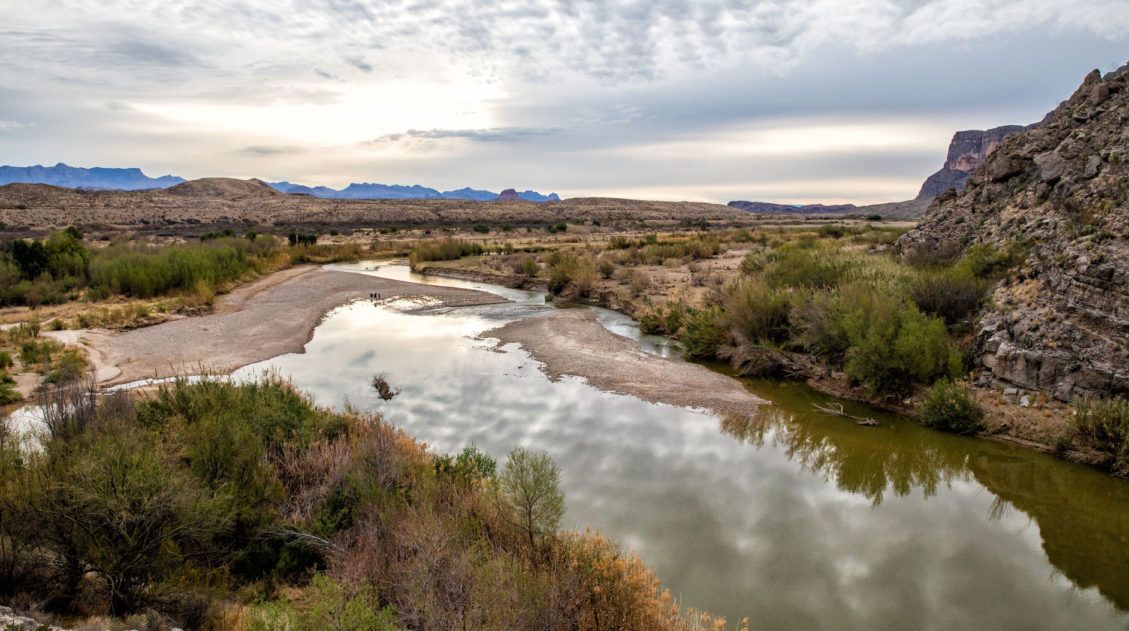
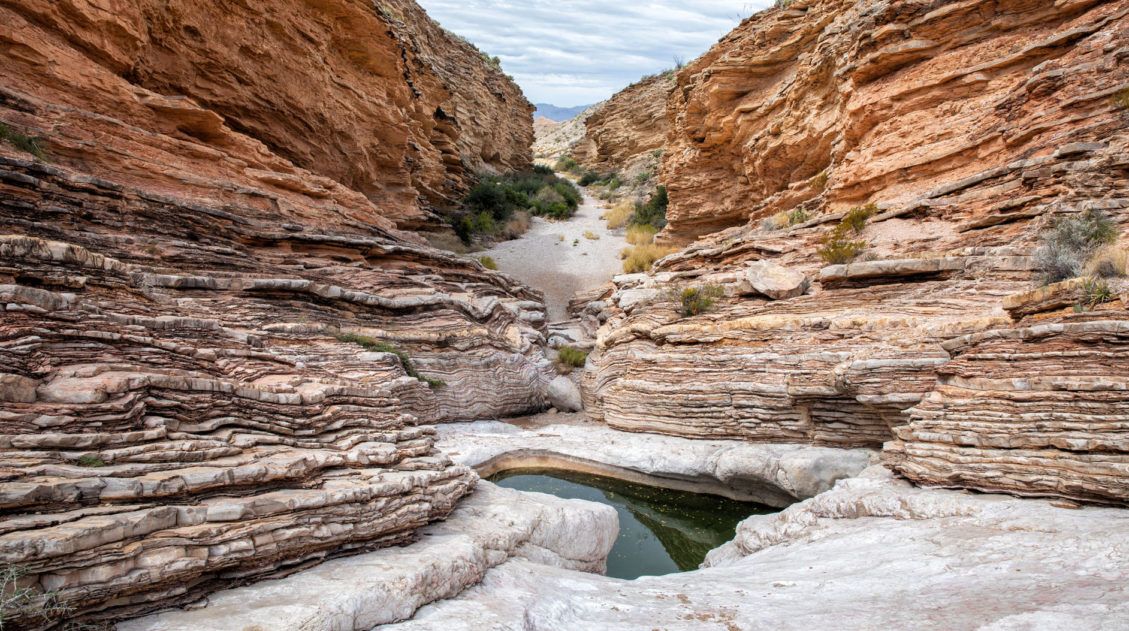
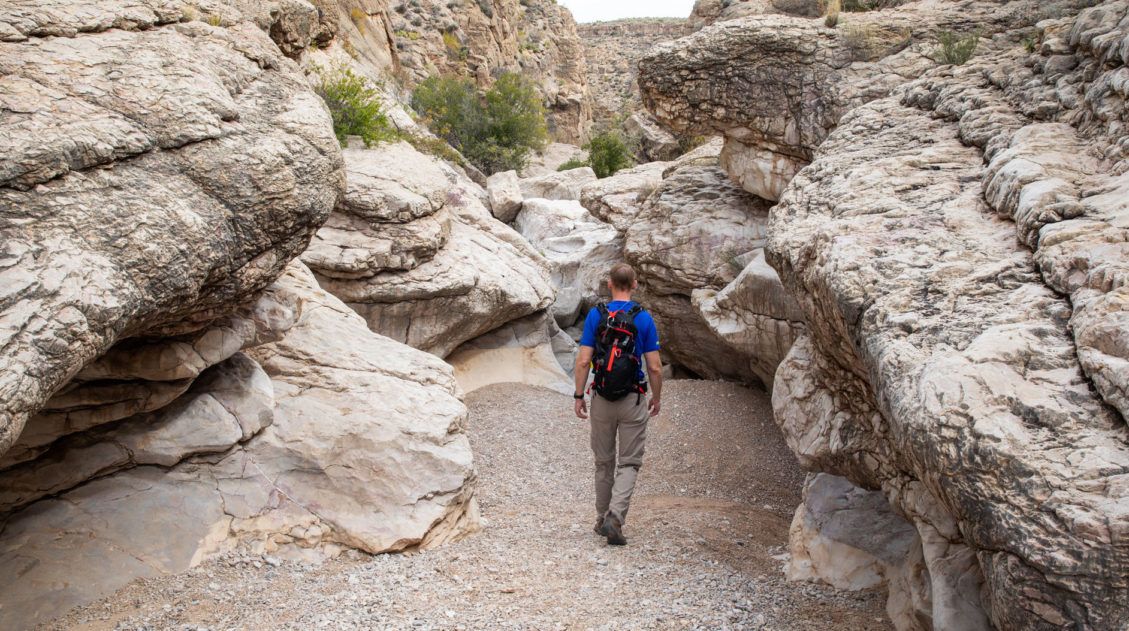
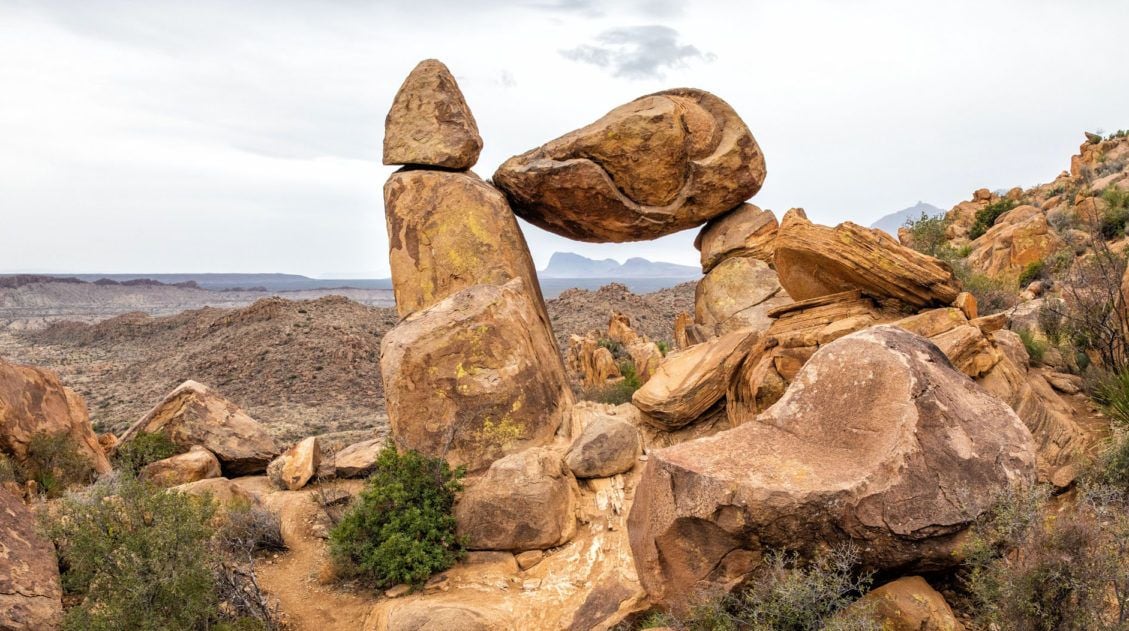
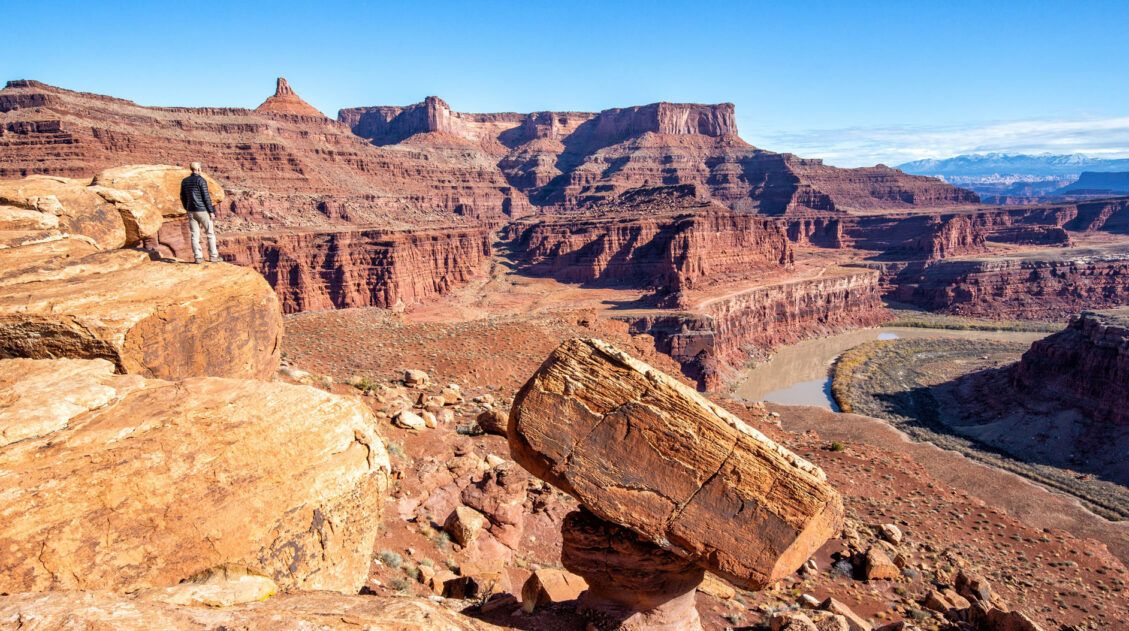
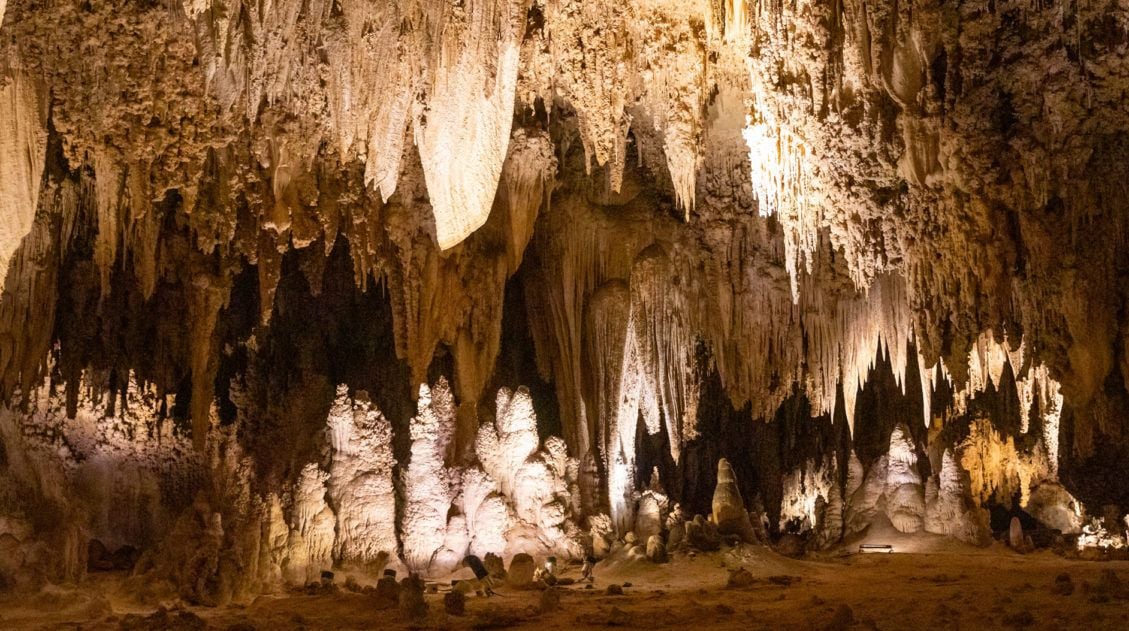
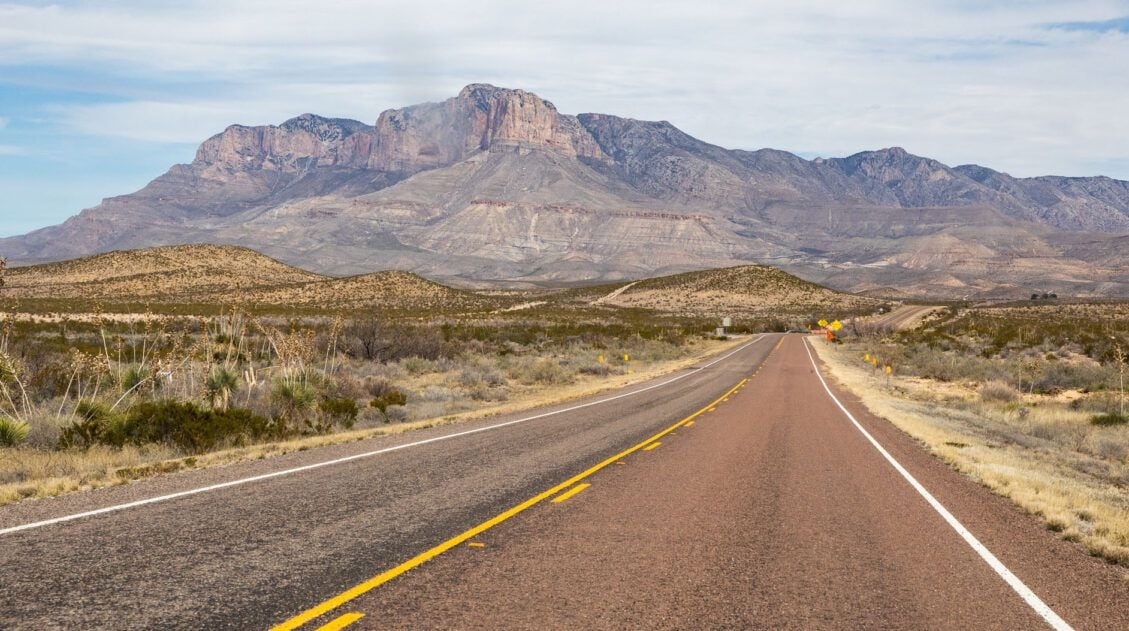
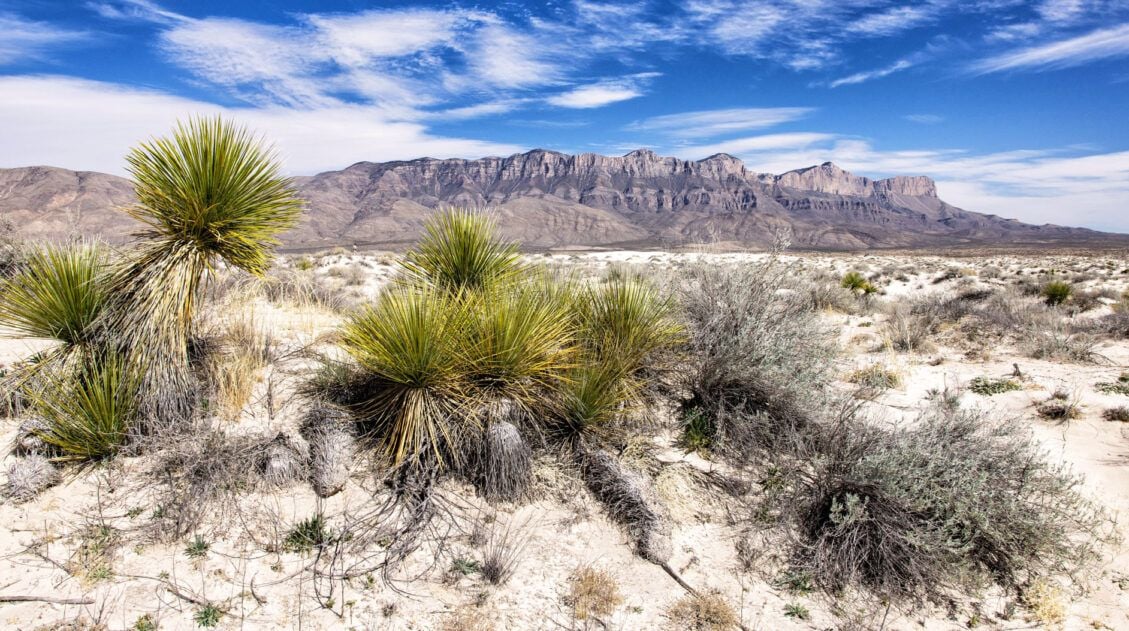
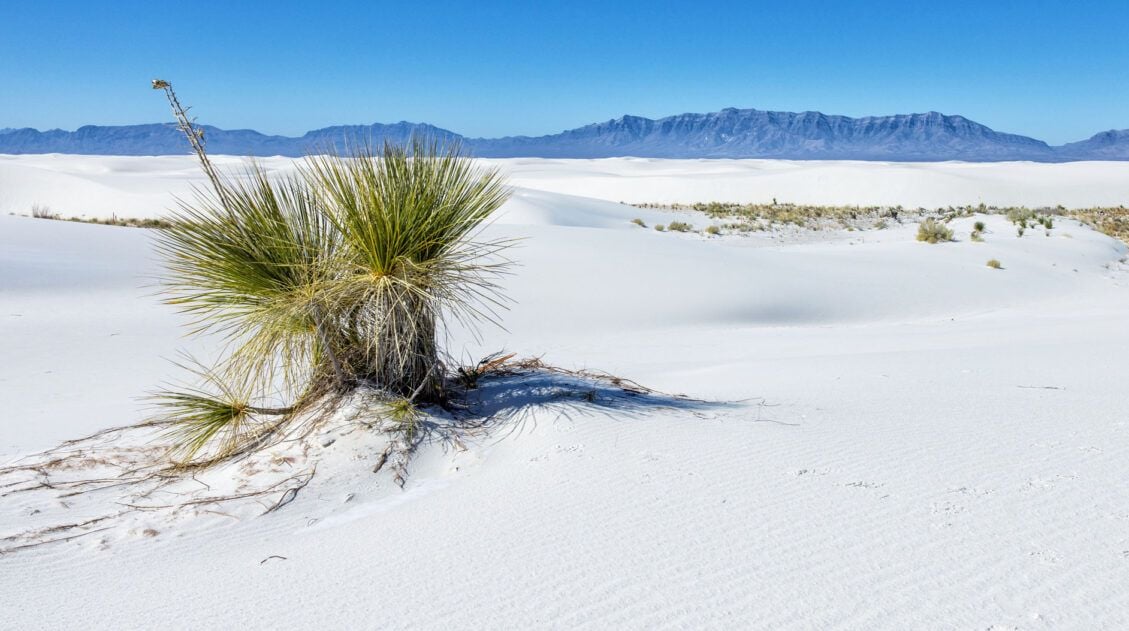
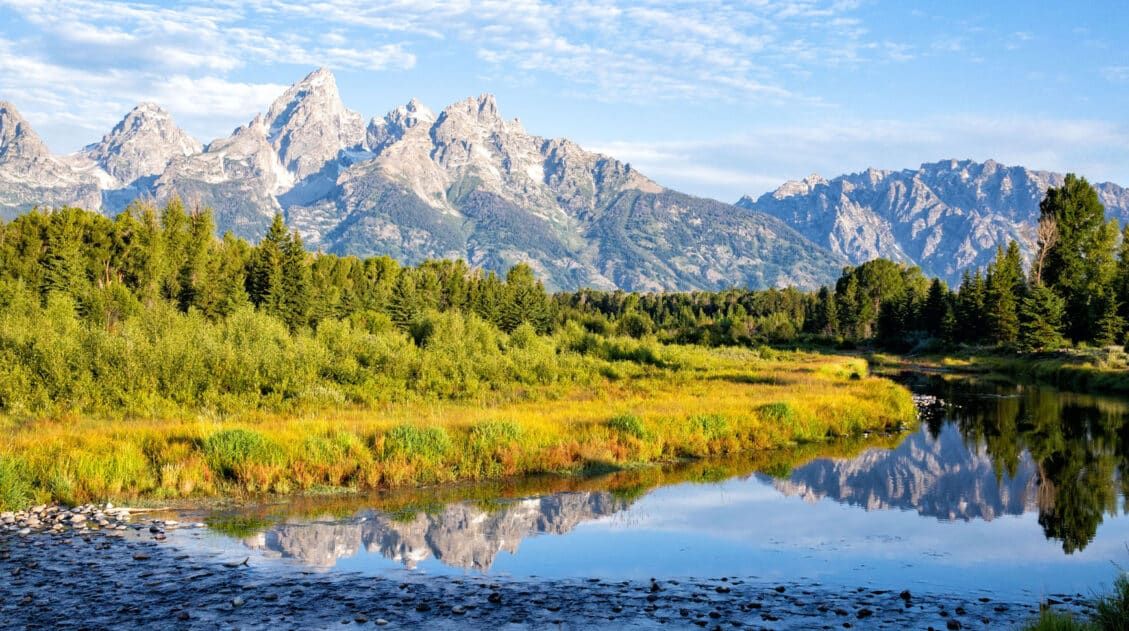
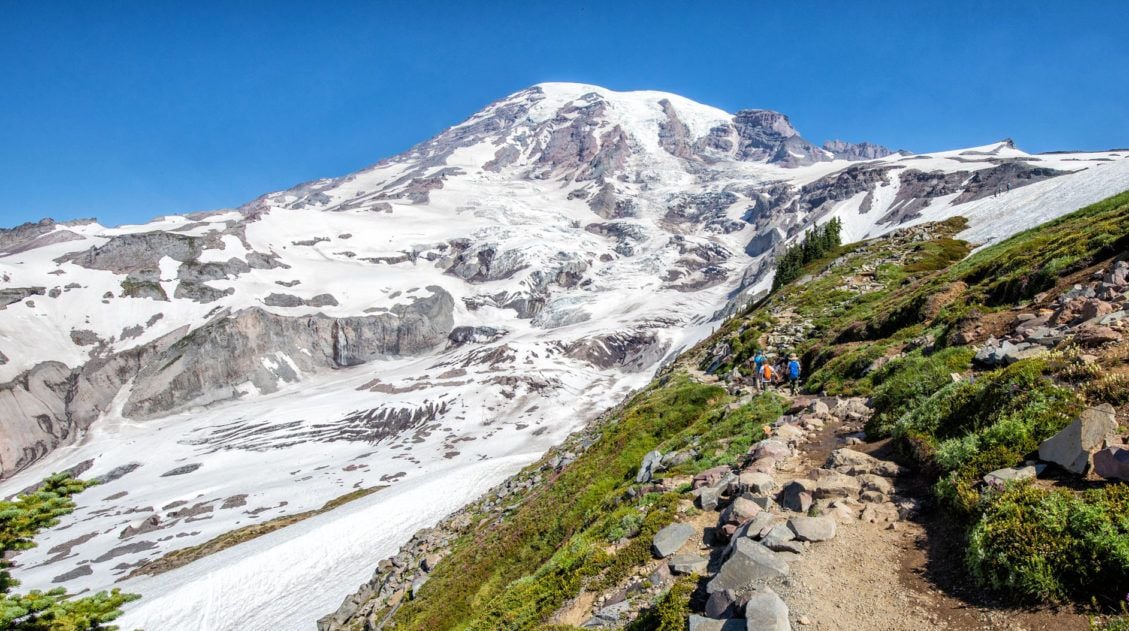
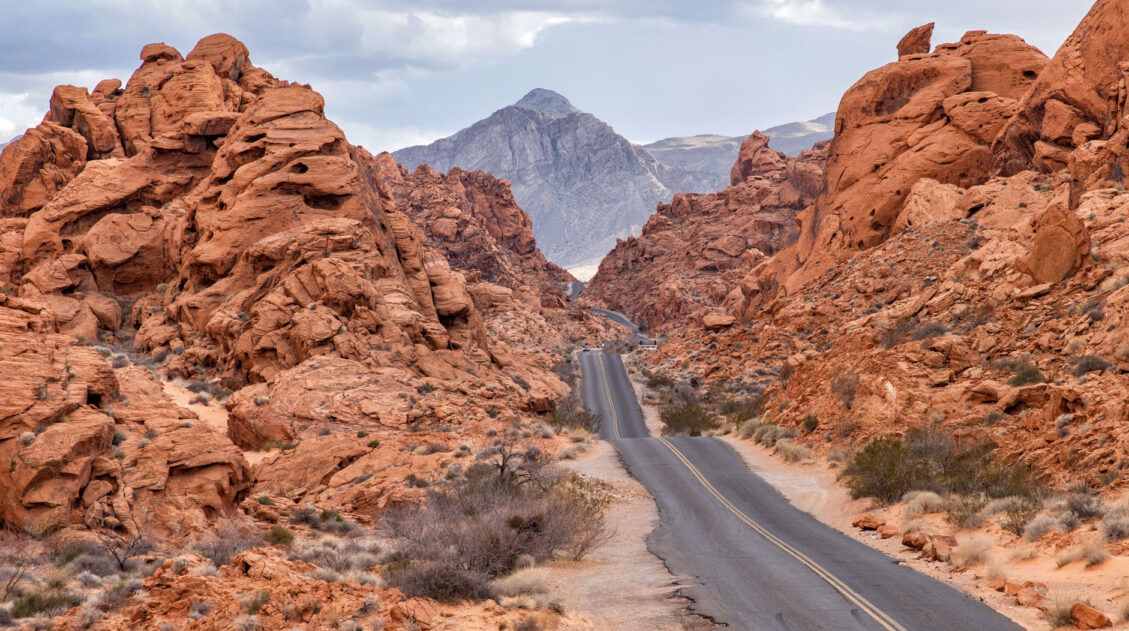
Comments 12